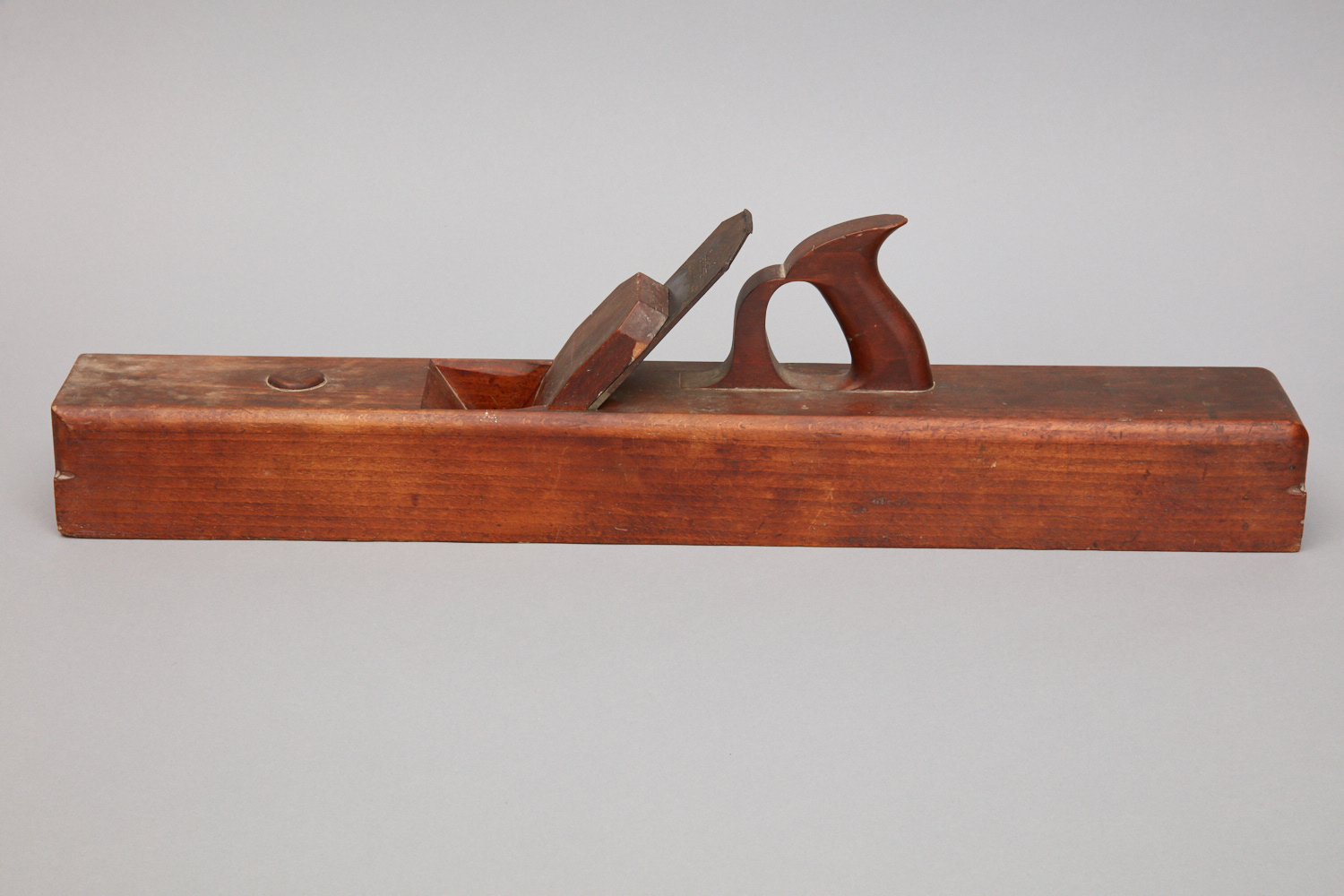Installation view of Work: Shaker Tools.
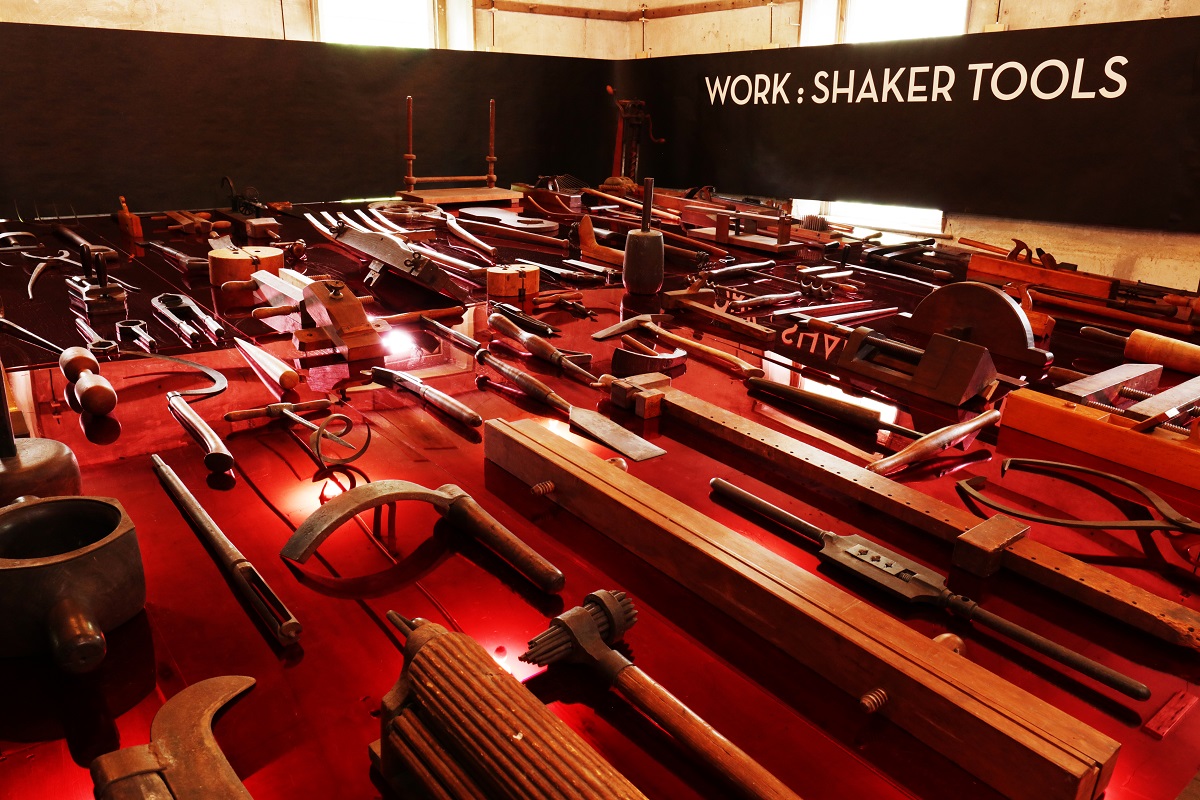
Installation view of Work: Shaker Tools.
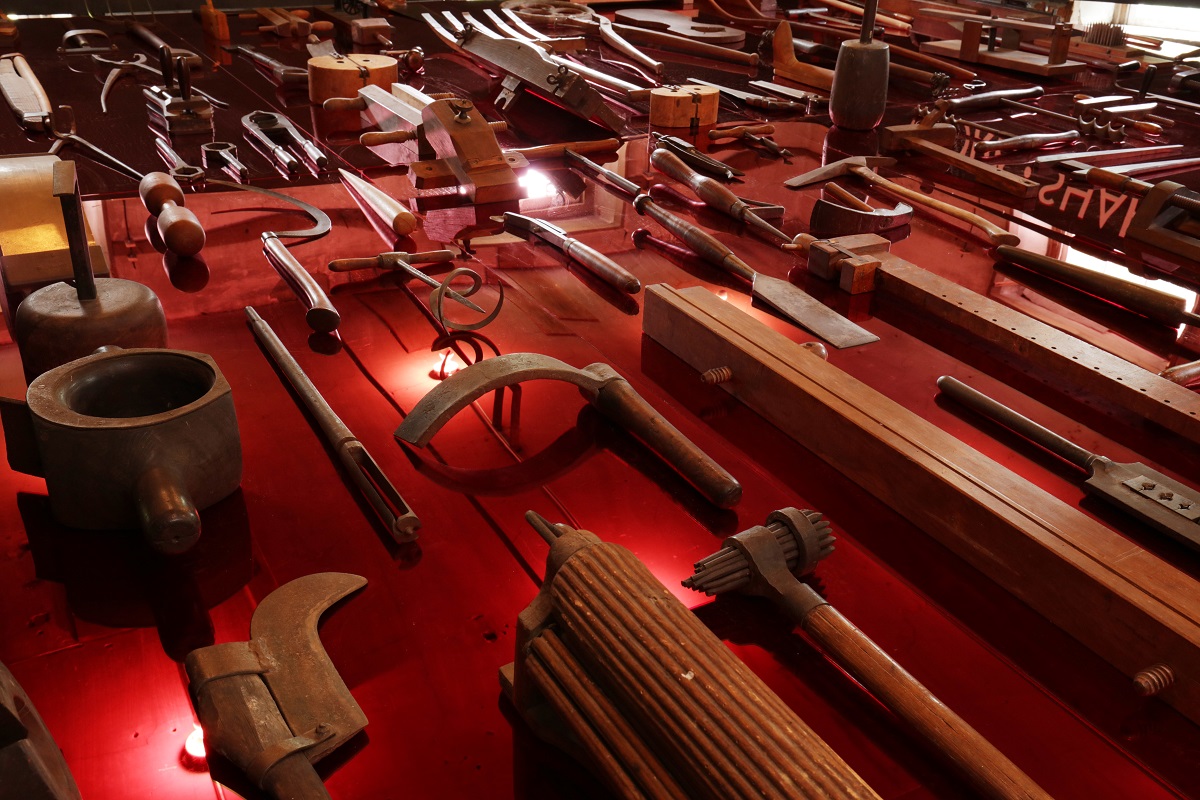
Installation view of Work: Shaker Tools.
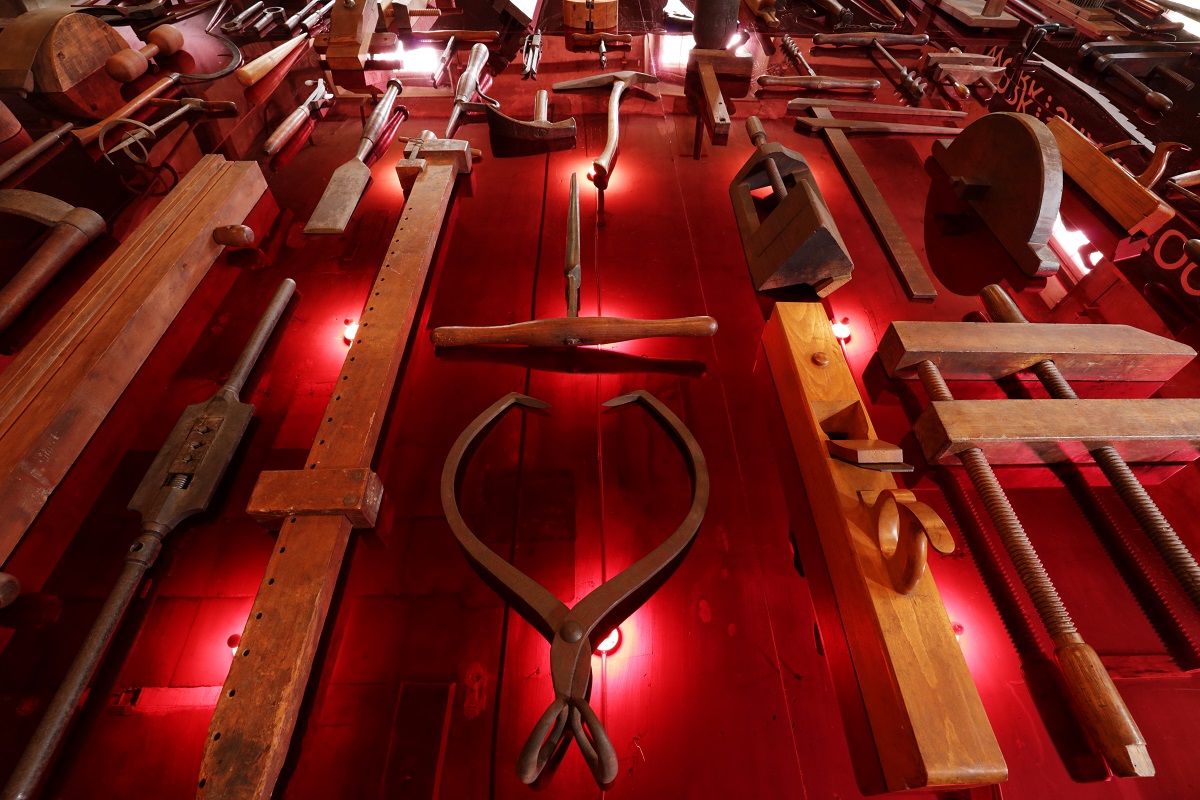
Installation view of Work: Shaker Tools.
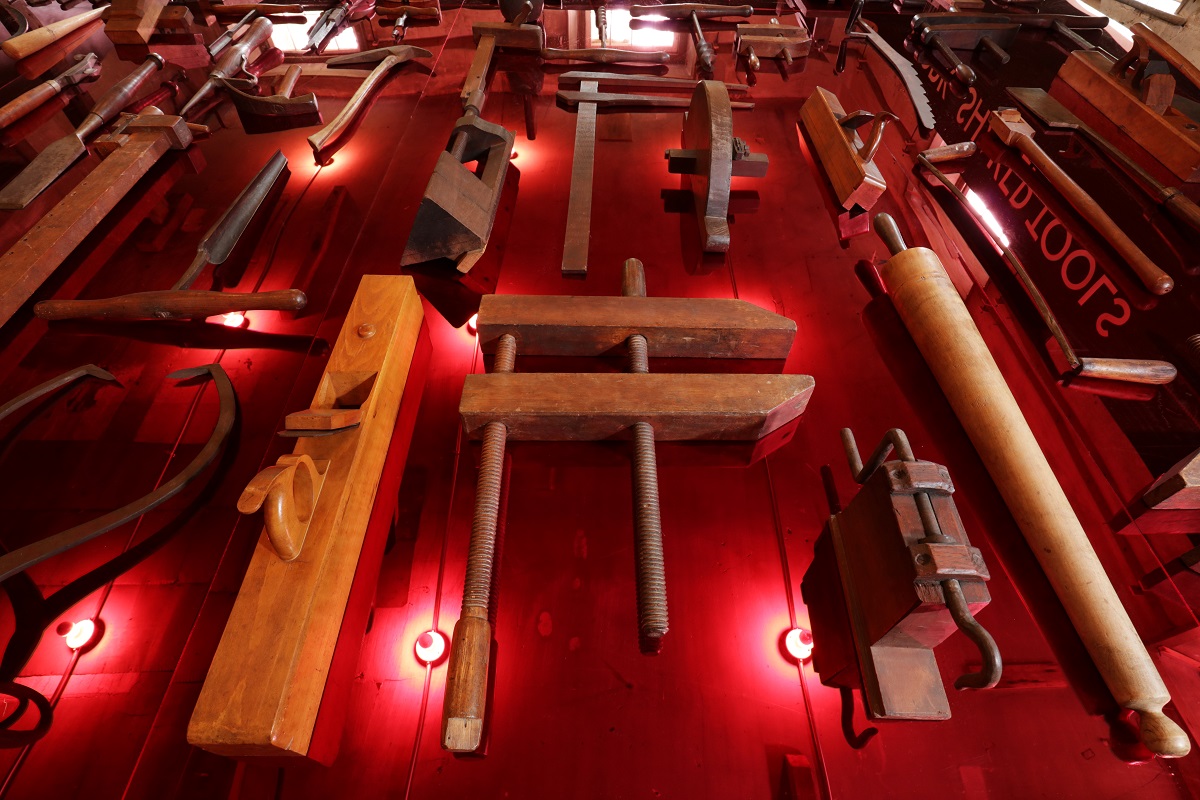
Installation view of Work: Shaker Tools.
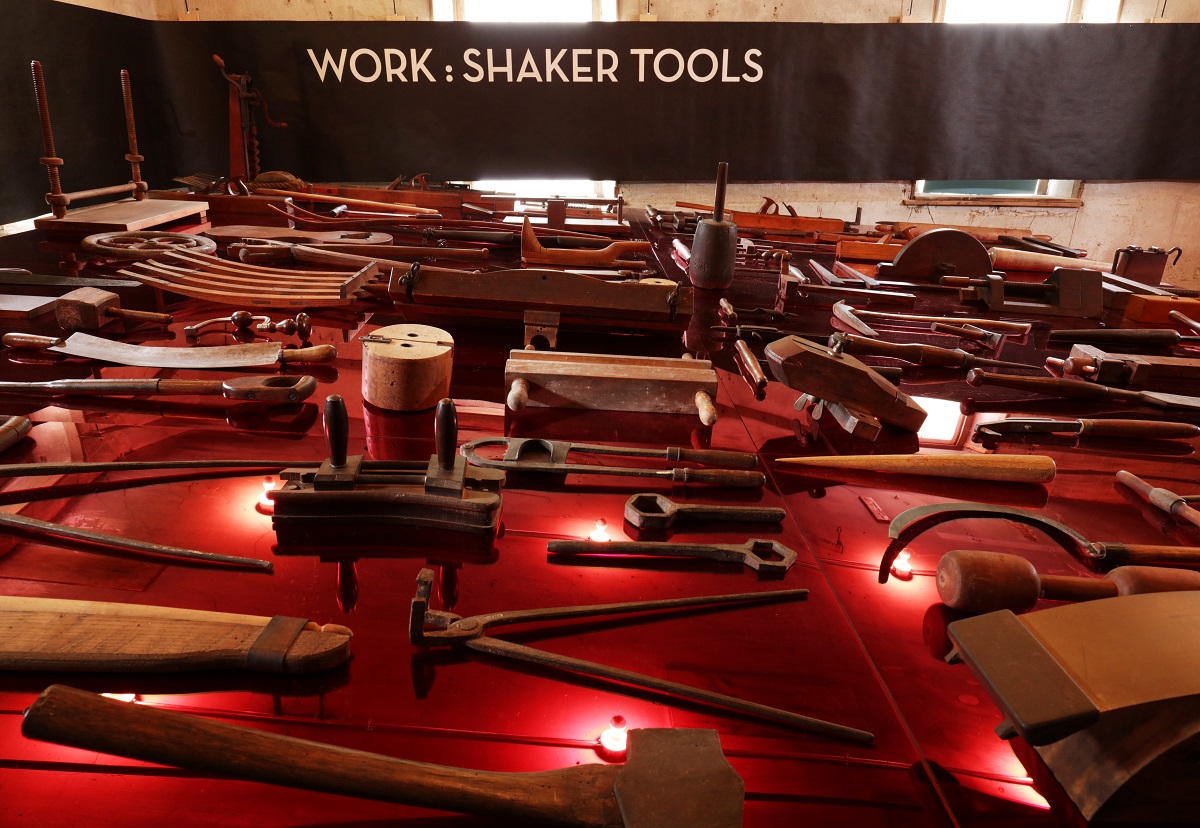
Installation view of Work: Shaker Tools.
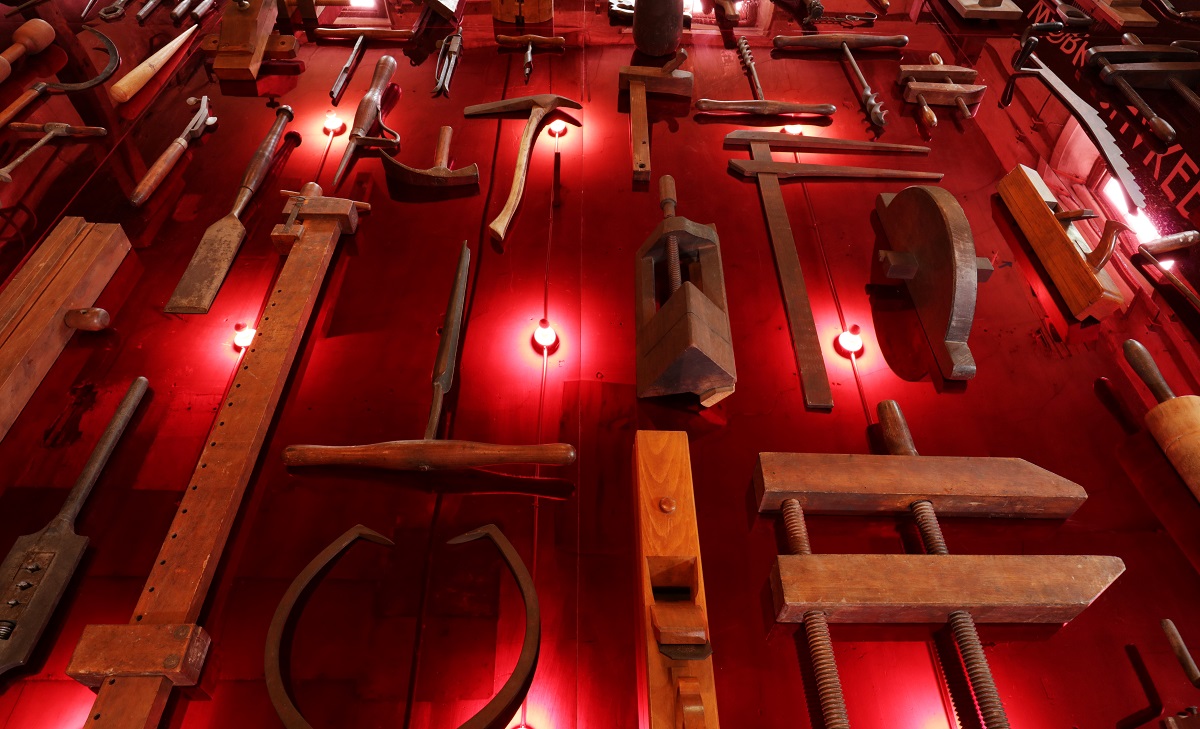
Installation view of Work: Shaker Tools.
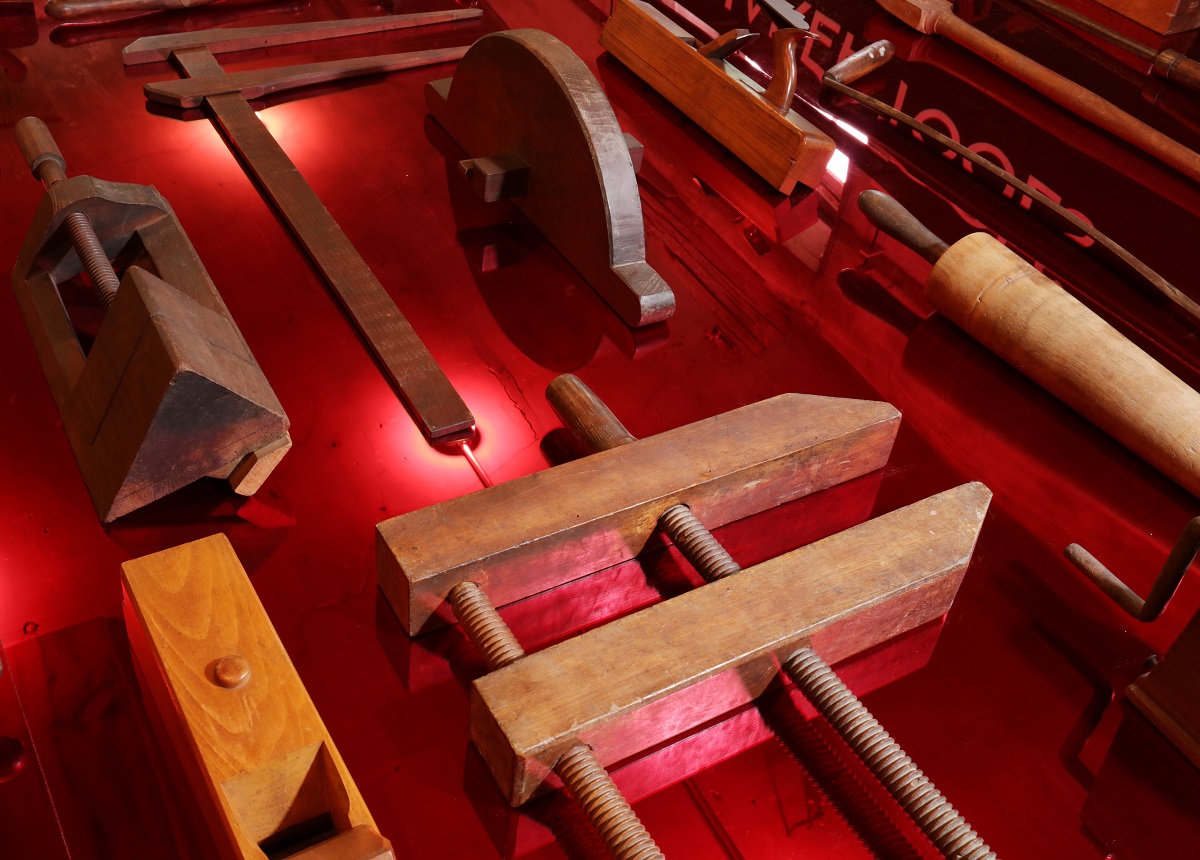
Hand-processed wool is either carded or combed. Long fiber wool, worsted, is combed using a pair of wool combs such as this one. Because of the long fibers, worsted yarn is strong and has a much smoother surface than yarn produced from carded wool. Shaker Museum 1950.29.1.
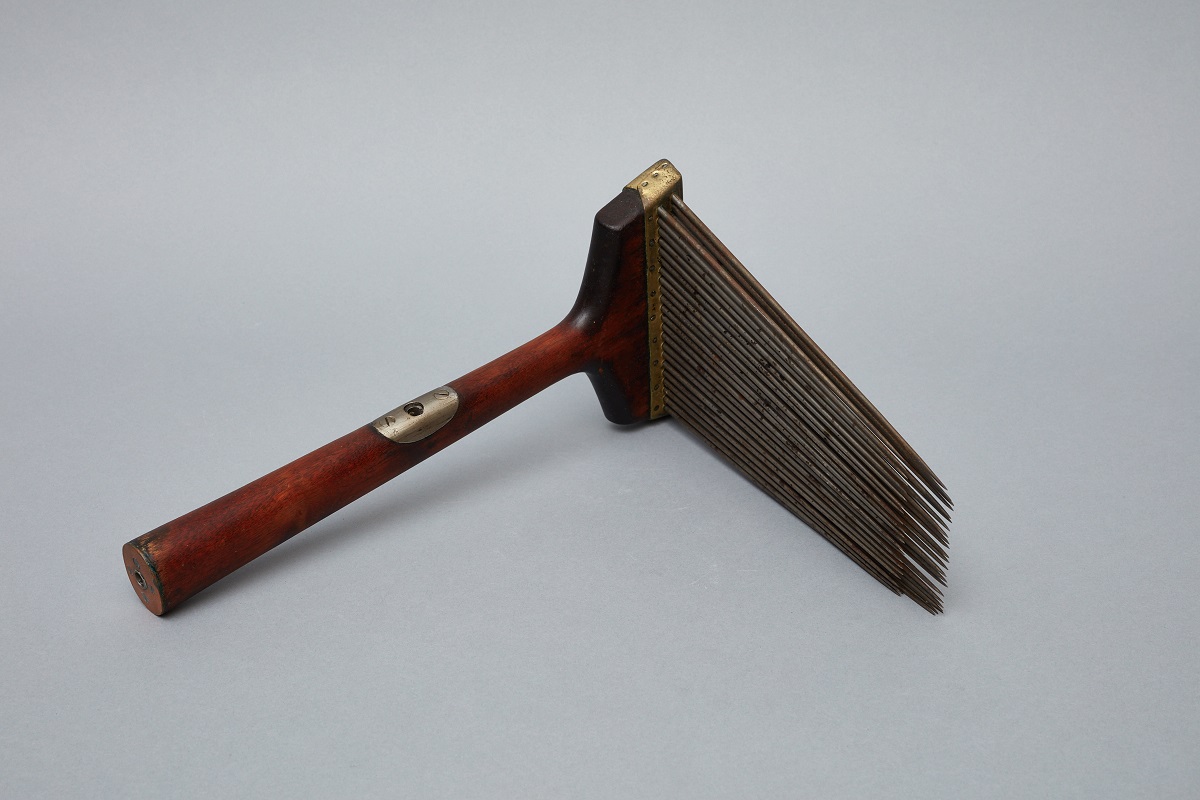
Root cutting tool made of forged iron with an ash handle. Shaker Museum 1950.1038.1.
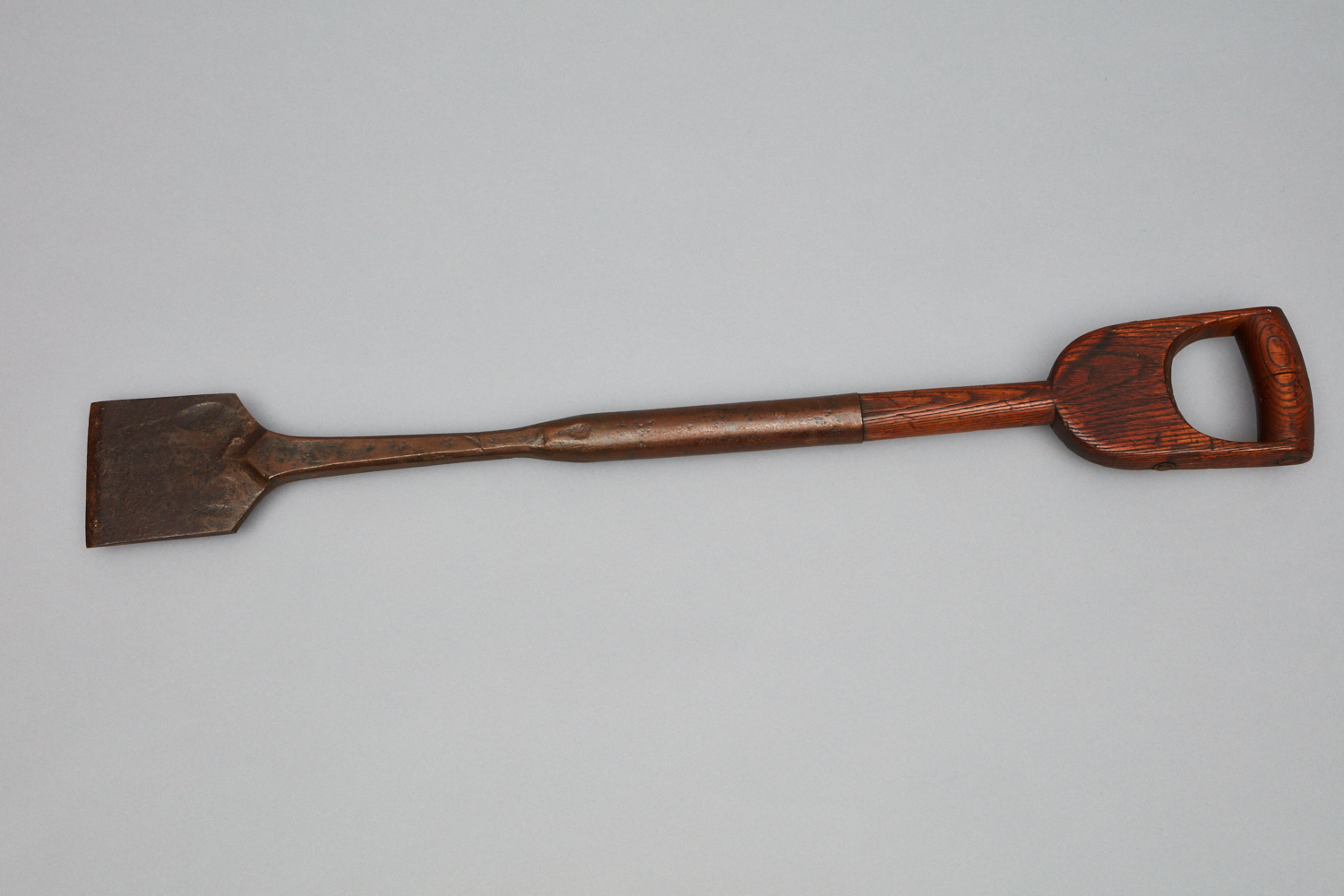
Jointer plane used by Brother George Wickersham, Church Family, Mount Lebanon, NY. Shaker Museum 1950.1135.1.
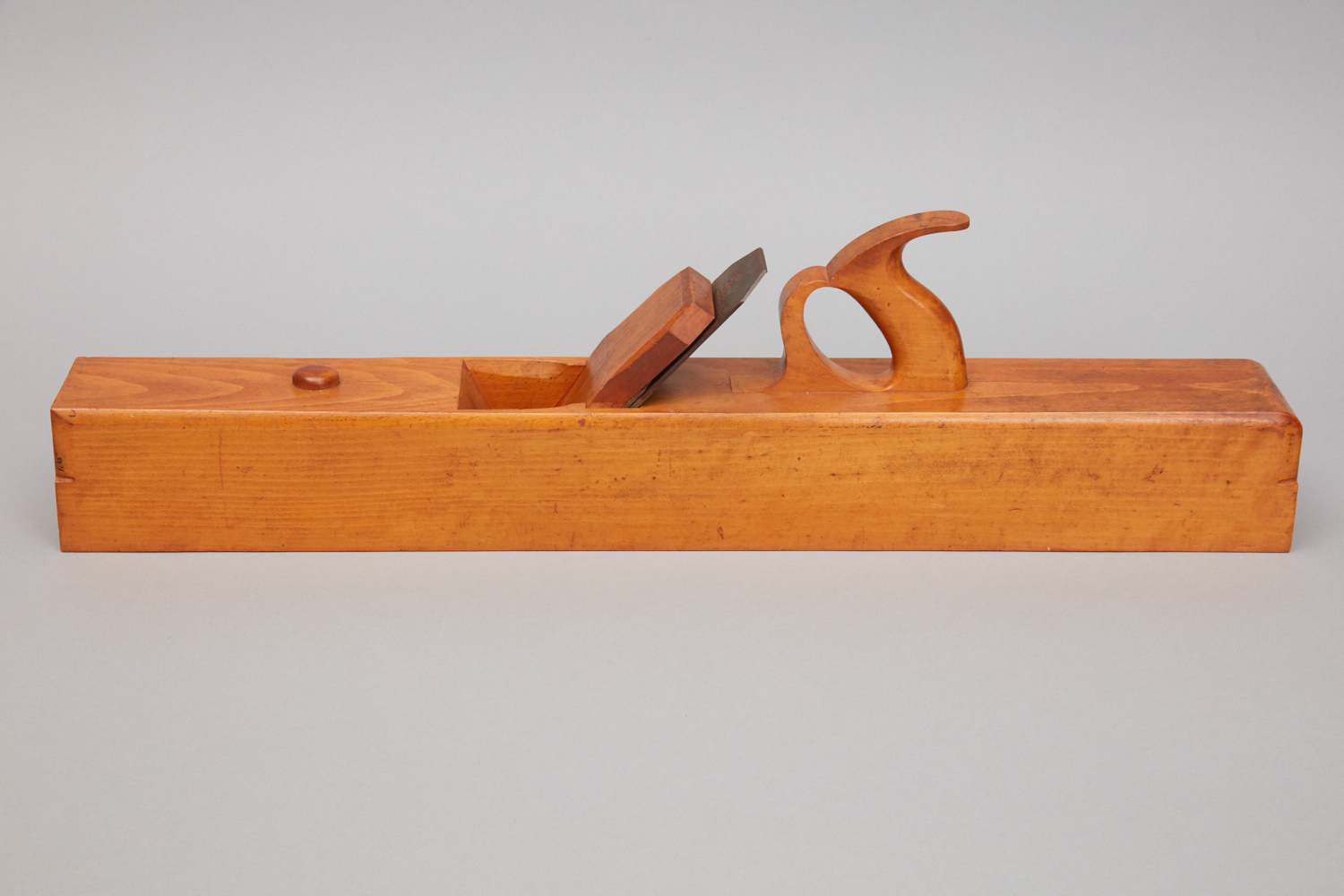
Rabbet plane used by Brother George M. Wickersham, Church Family, Mount Lebanon, NY. Shaker Museum 1950.1174.1.
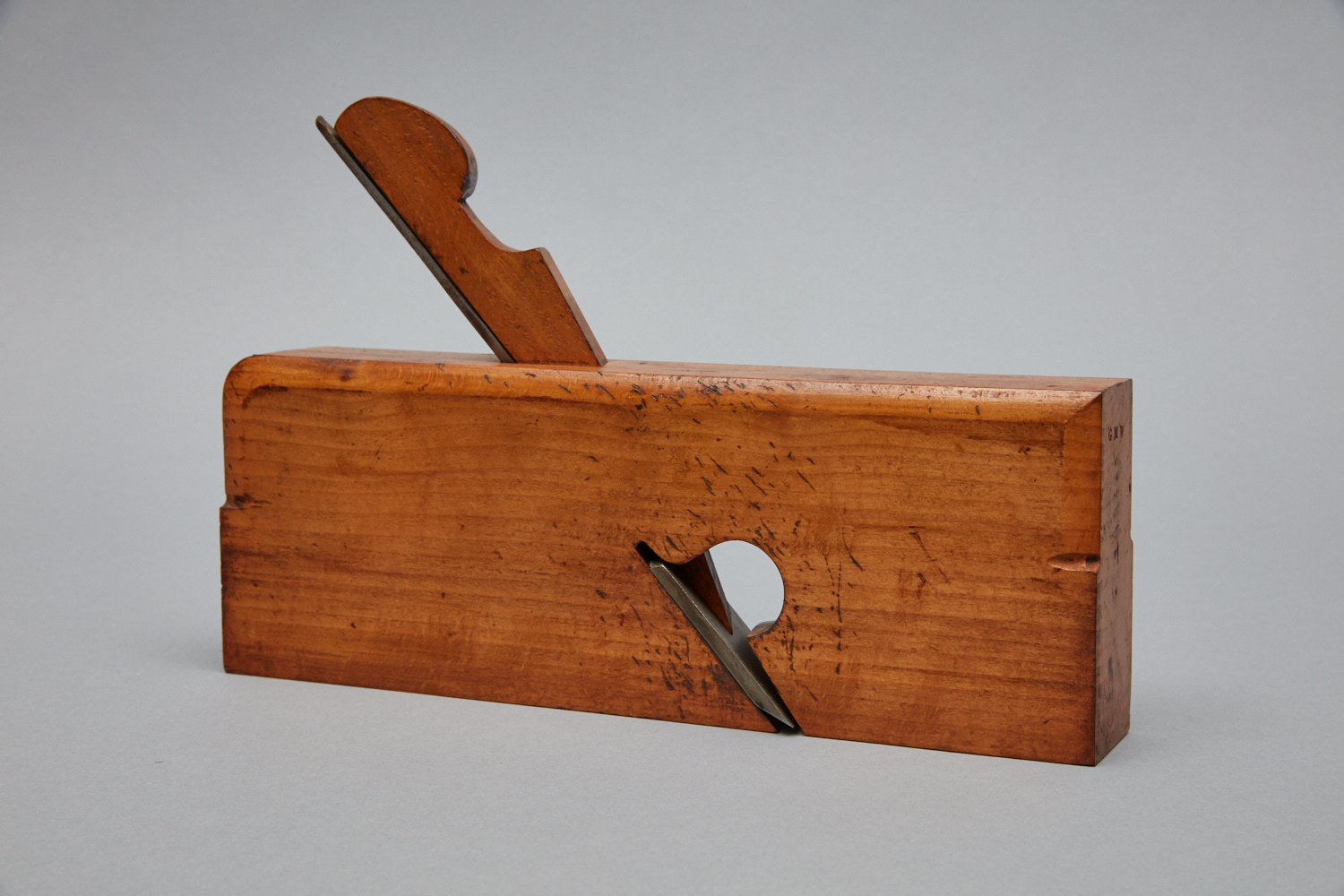
Adz used by coopers to cut the chime bevel. Shaker Museum 1950.1265.1.
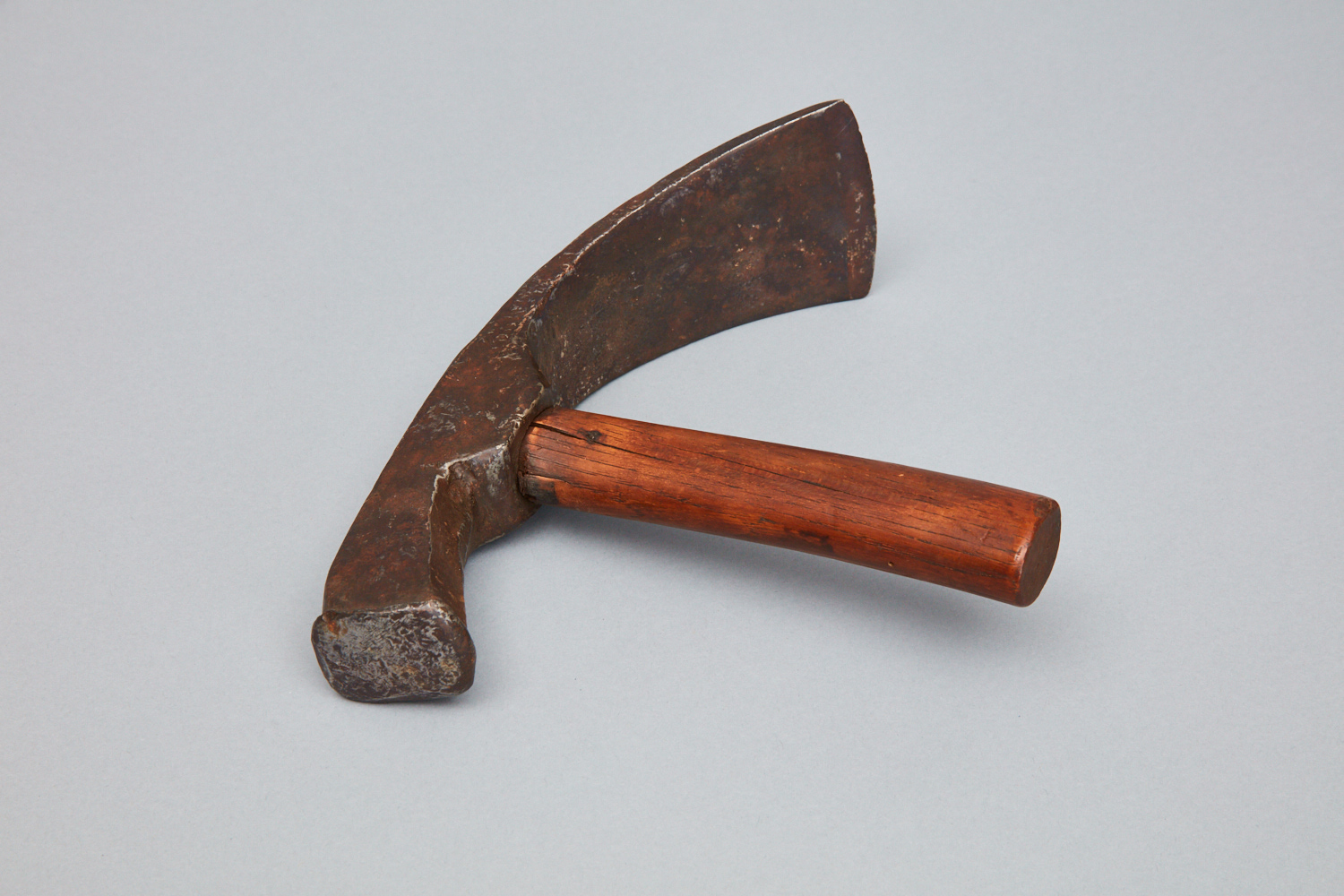
Thistle puller made of ash, maple, and iron. Shaker Museum 1950.1266.1.
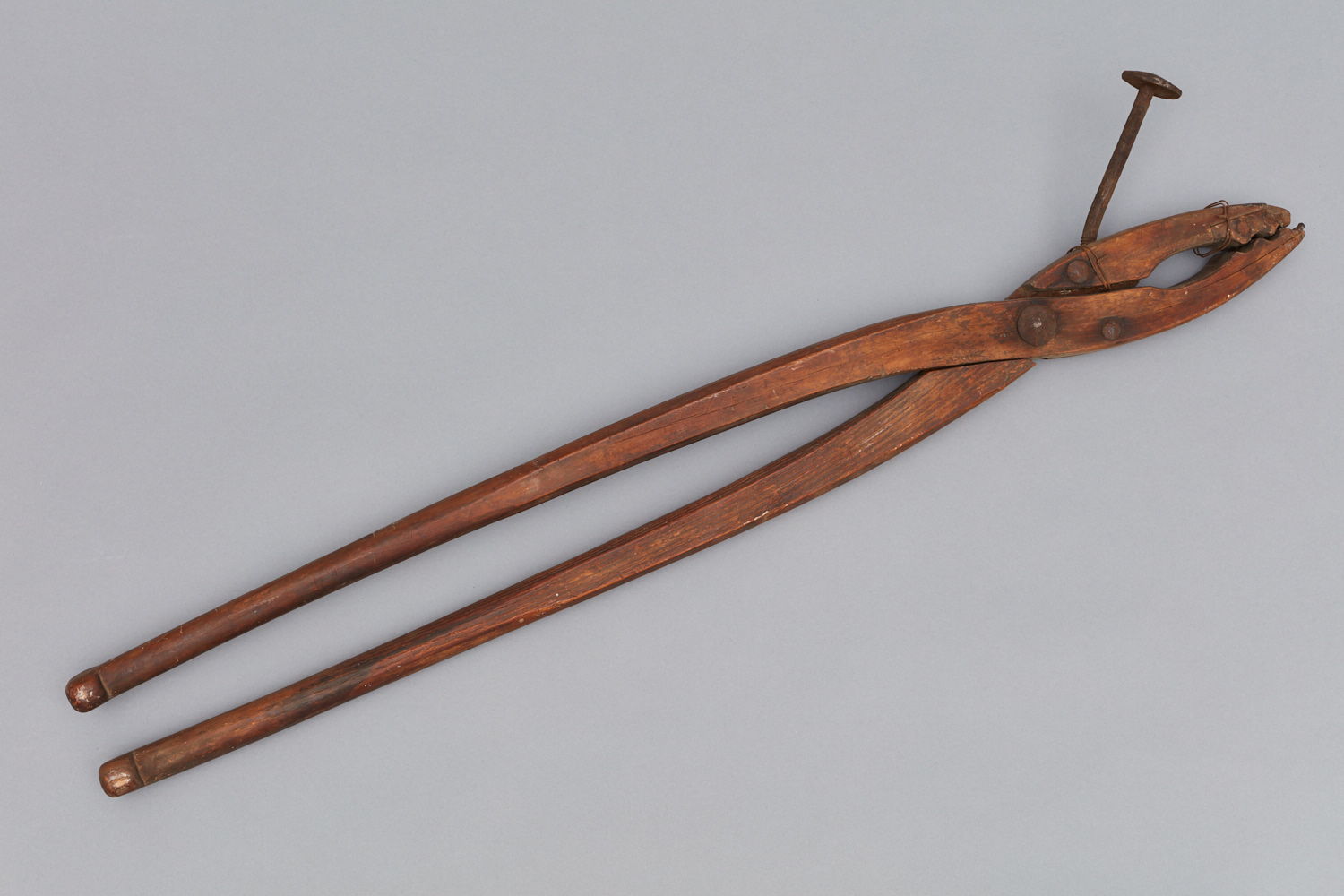
Rabbet plane used by Brother George M. Wickersham, Church Family, Mount Lebanon, NY. Shaker Museum 1950.1276.1.
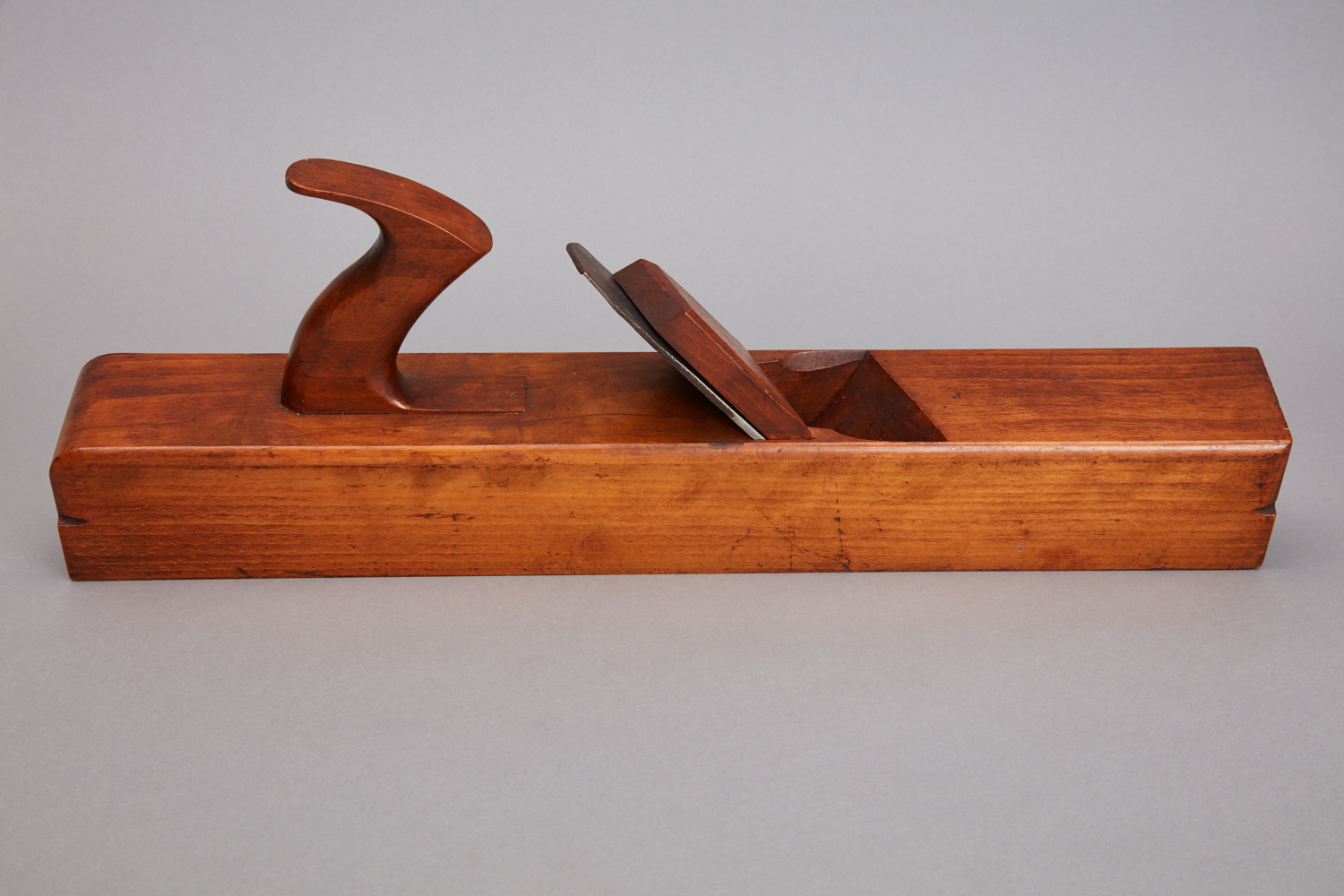
Drawknife. Church Family, Mount Lebanon, NY. Shaker Museum 1950.1283.1.
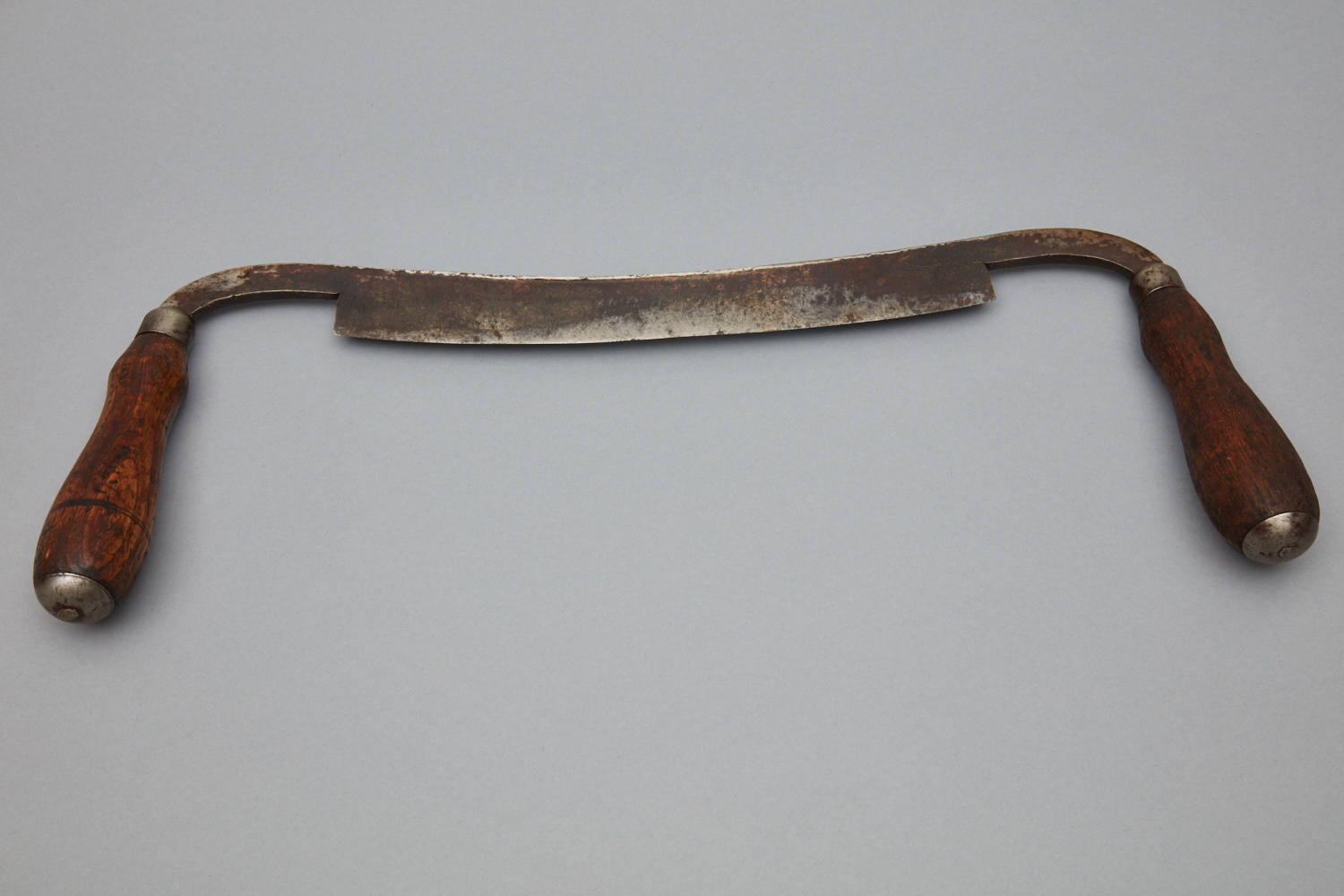
Cast steel broadax used to square up timbers. Church Family, Mount Lebanon, NY. Shaker Museum 1950.1301.1.
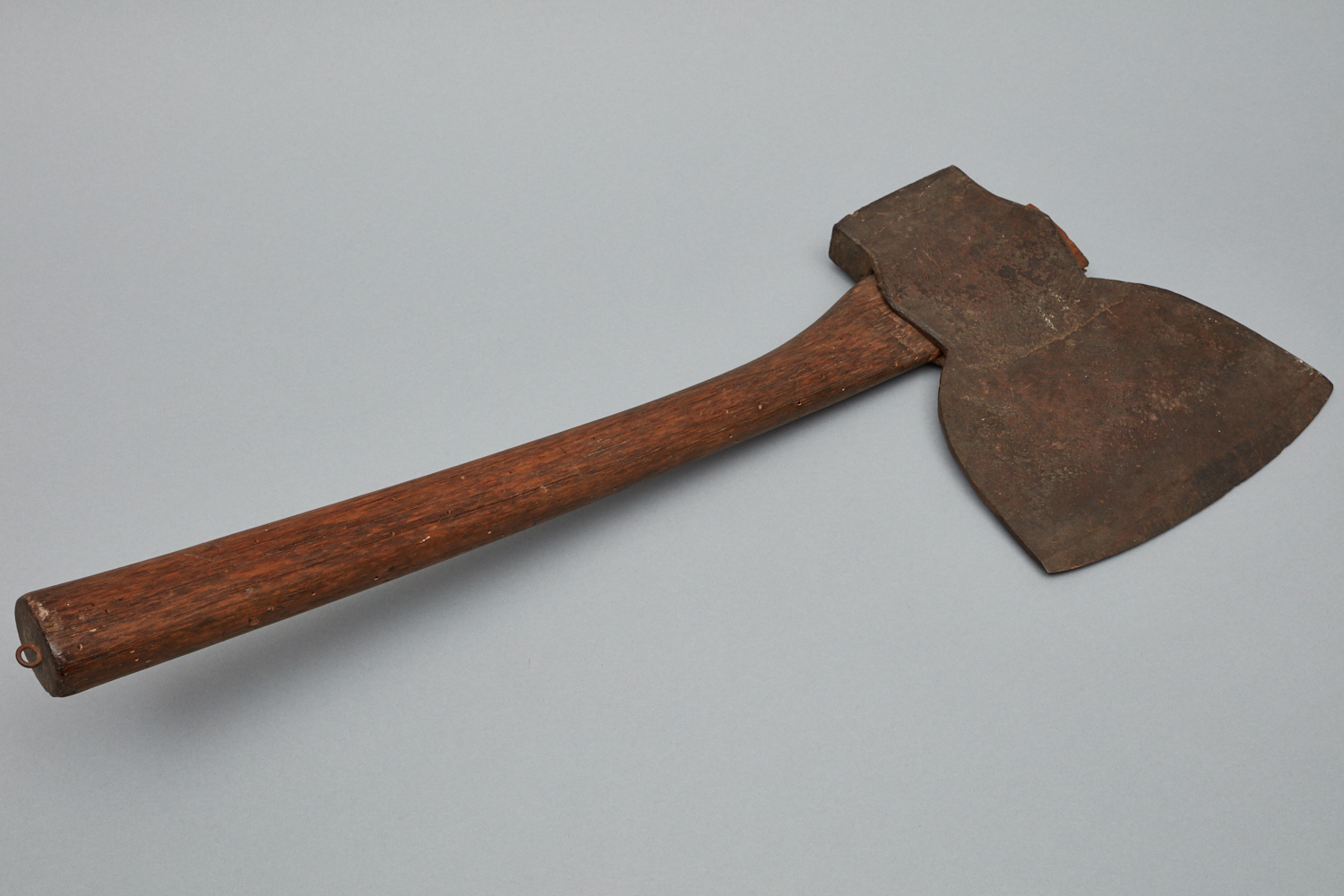
Forged iron de-horning device with maple handles. Church Family, Mount Lebanon, NY. Shaker Museum 1950.1377.1.
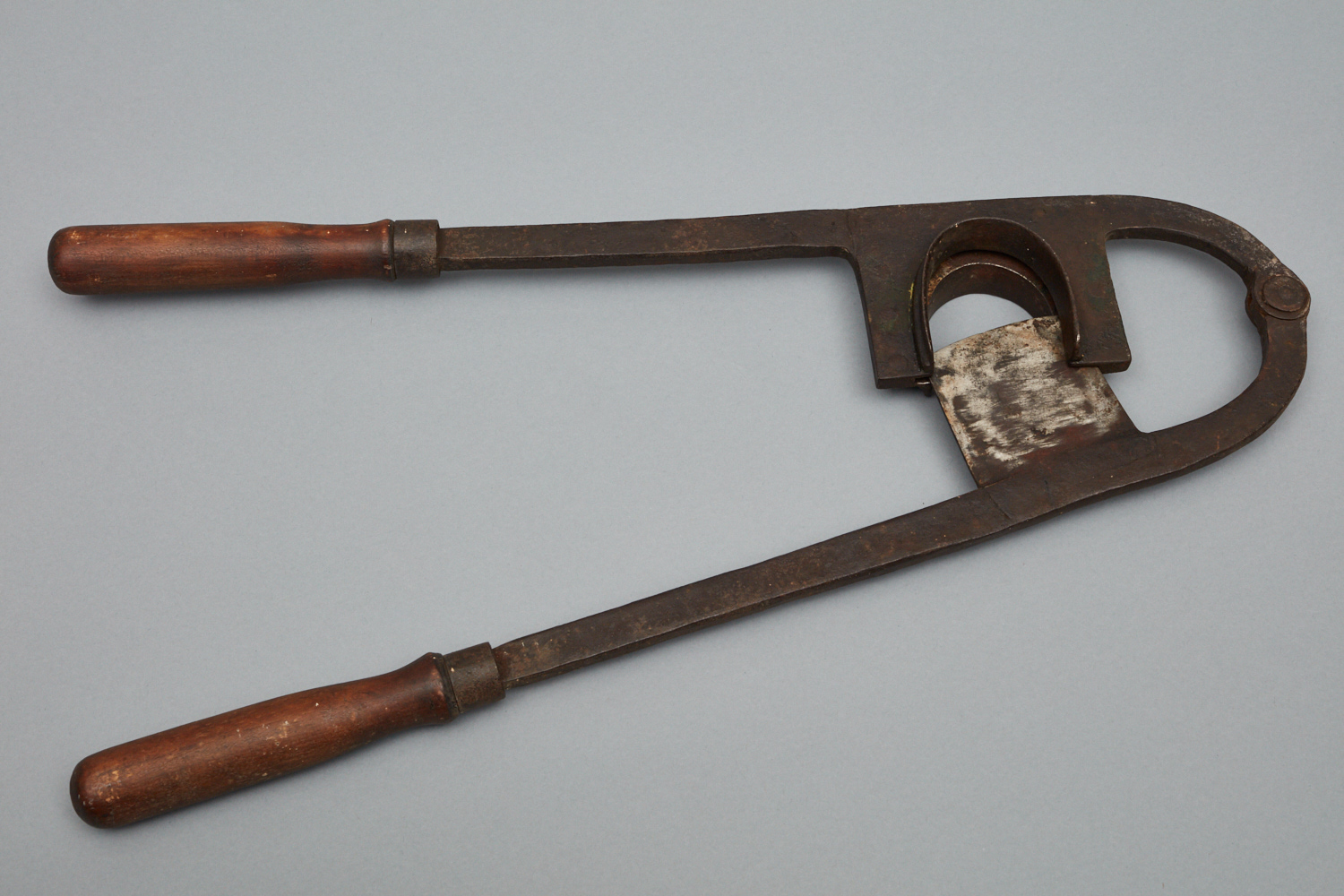
Closed scorper or inshave. Church Family, Mount Lebanon, NY. Shaker Museum 1950.1443.1.
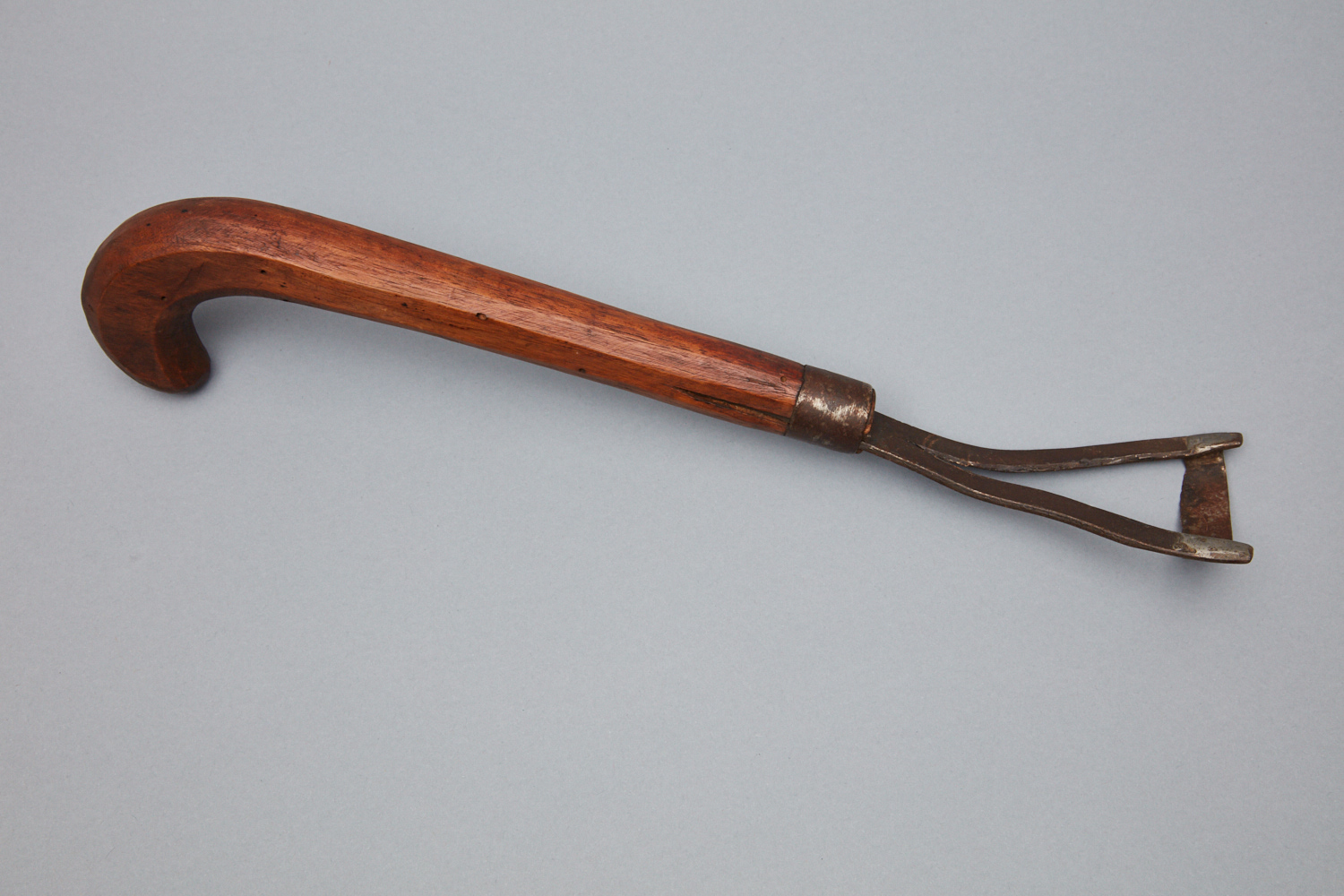
Cooper's croze, used to cut header grooves in tops and bottoms of barrels. Mount Lebanon, NY. Shaker Museum 1950.1445.1.
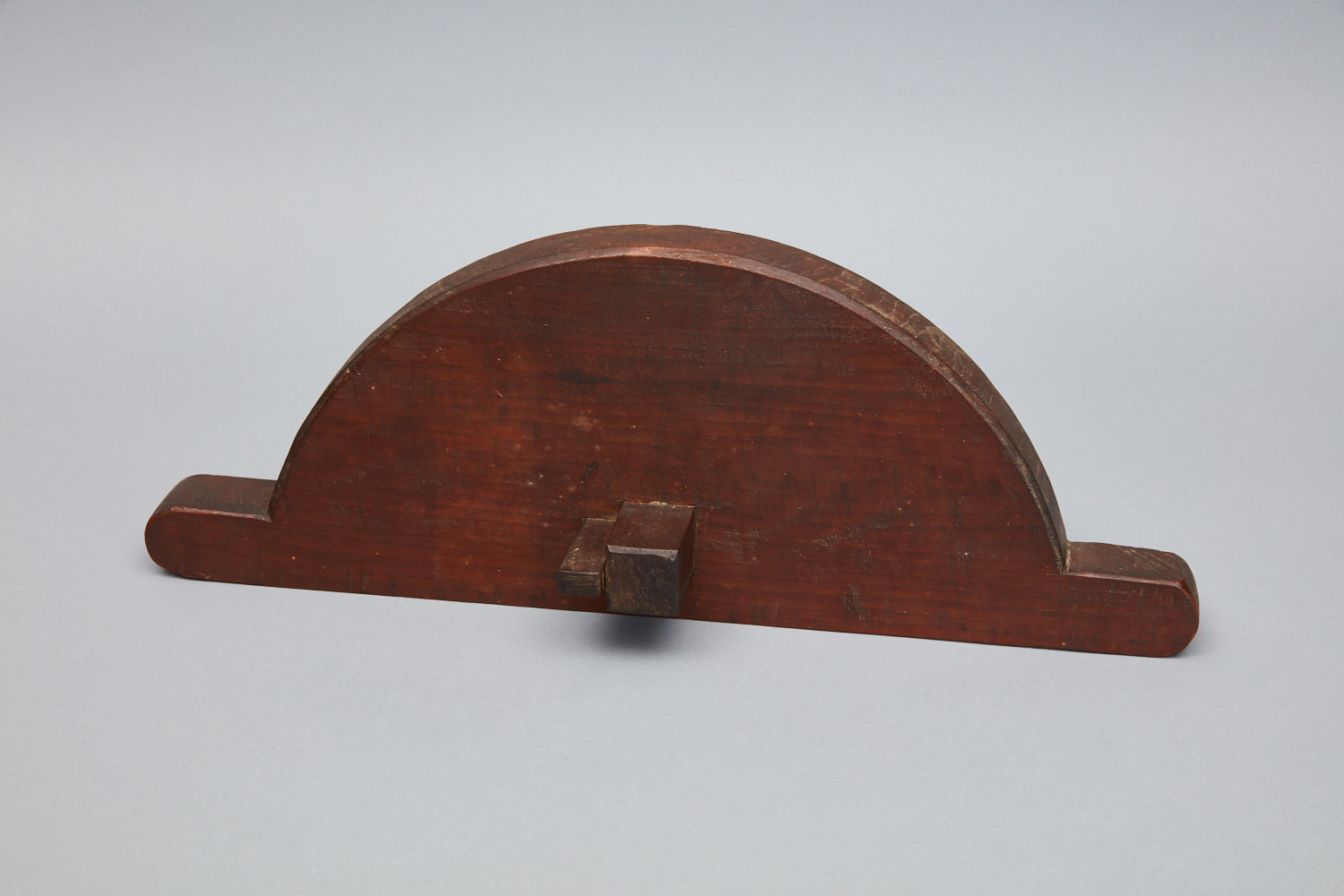
Steel side tongs. Church Family, Mount Lebanon, NY. Shaker Museum 1950.1479.1.
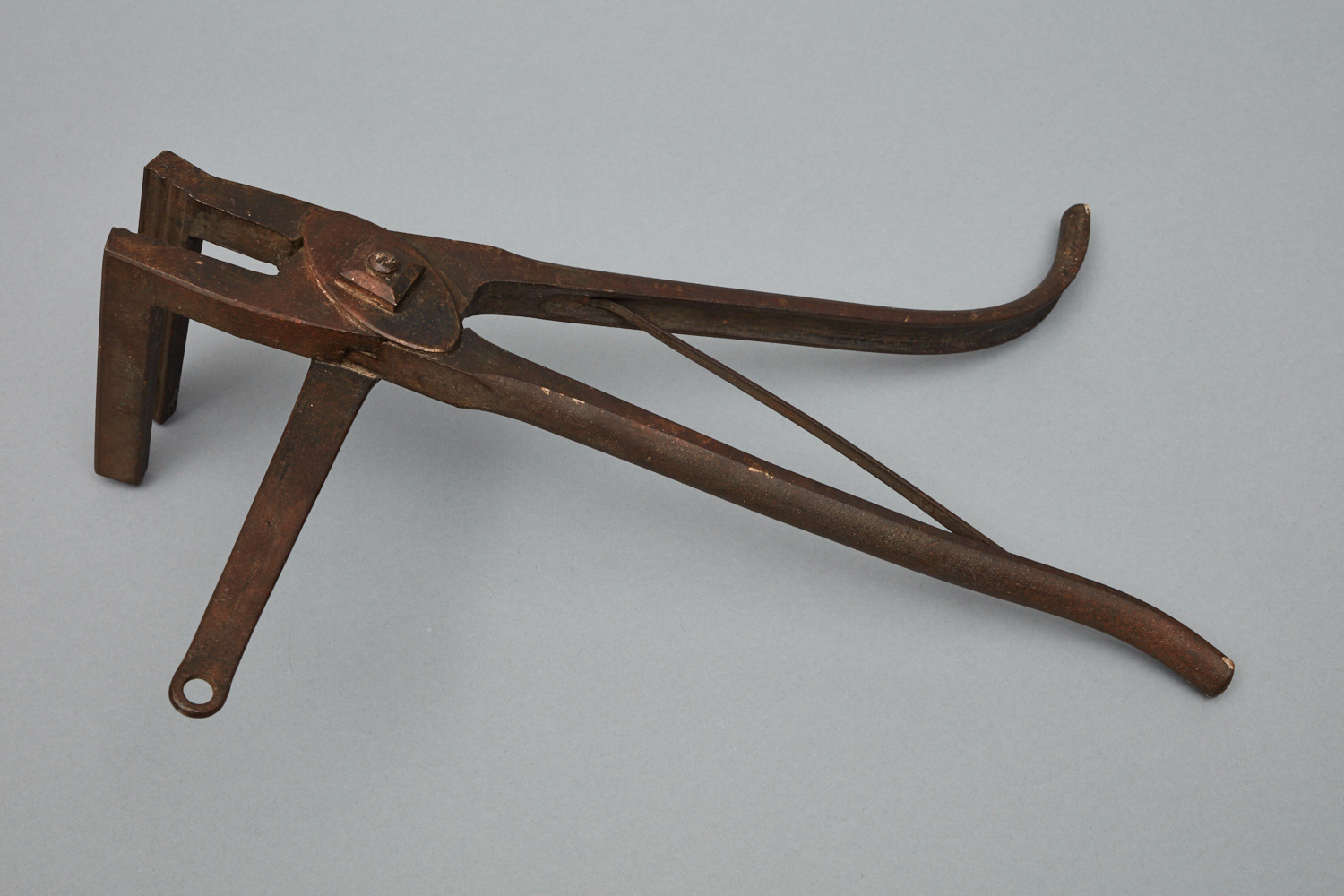
Crandall hammer, used to "face" stone surfaces. Church Family, Mount Lebanon, NY. Shaker Museum 1950.1483.1.
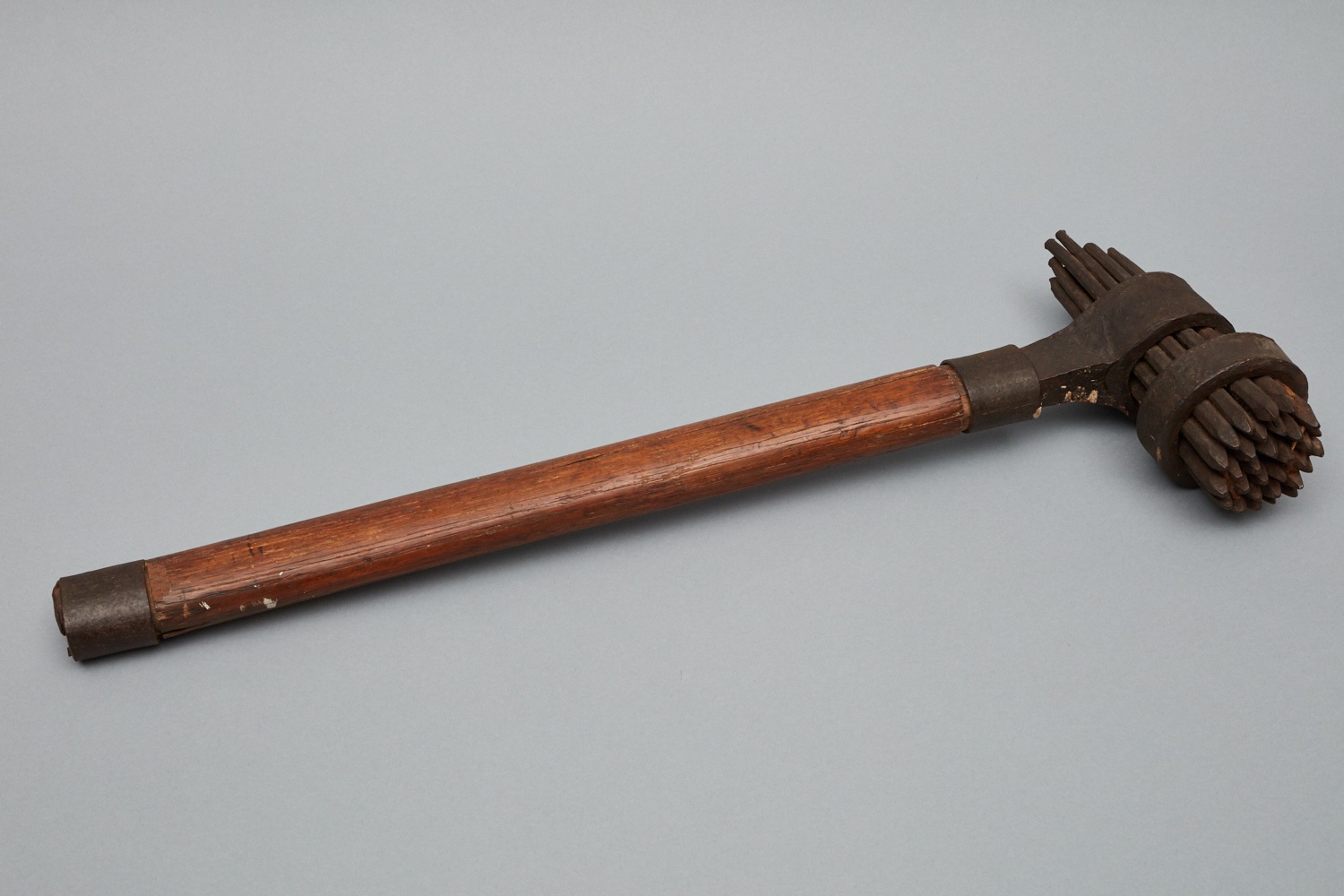
Cooper's froe, used in riving barrel and cask staves. Church Family, Mount Lebanon, NY. Shaker Museum 1950.1497.1.
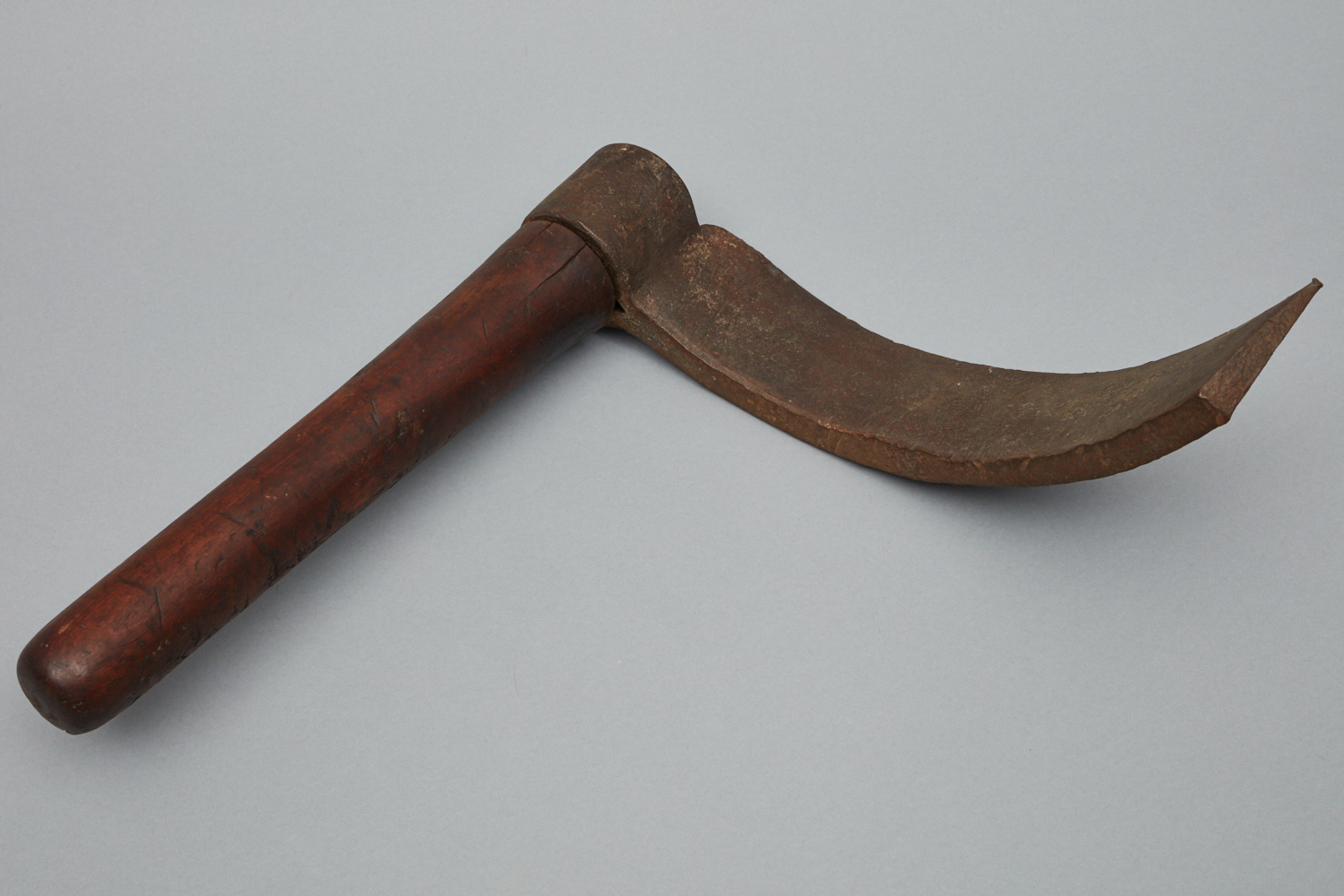
Forged iron heading tool. North Family, Mount Lebanon, NY. Shaker Museum 1950.2770.1.
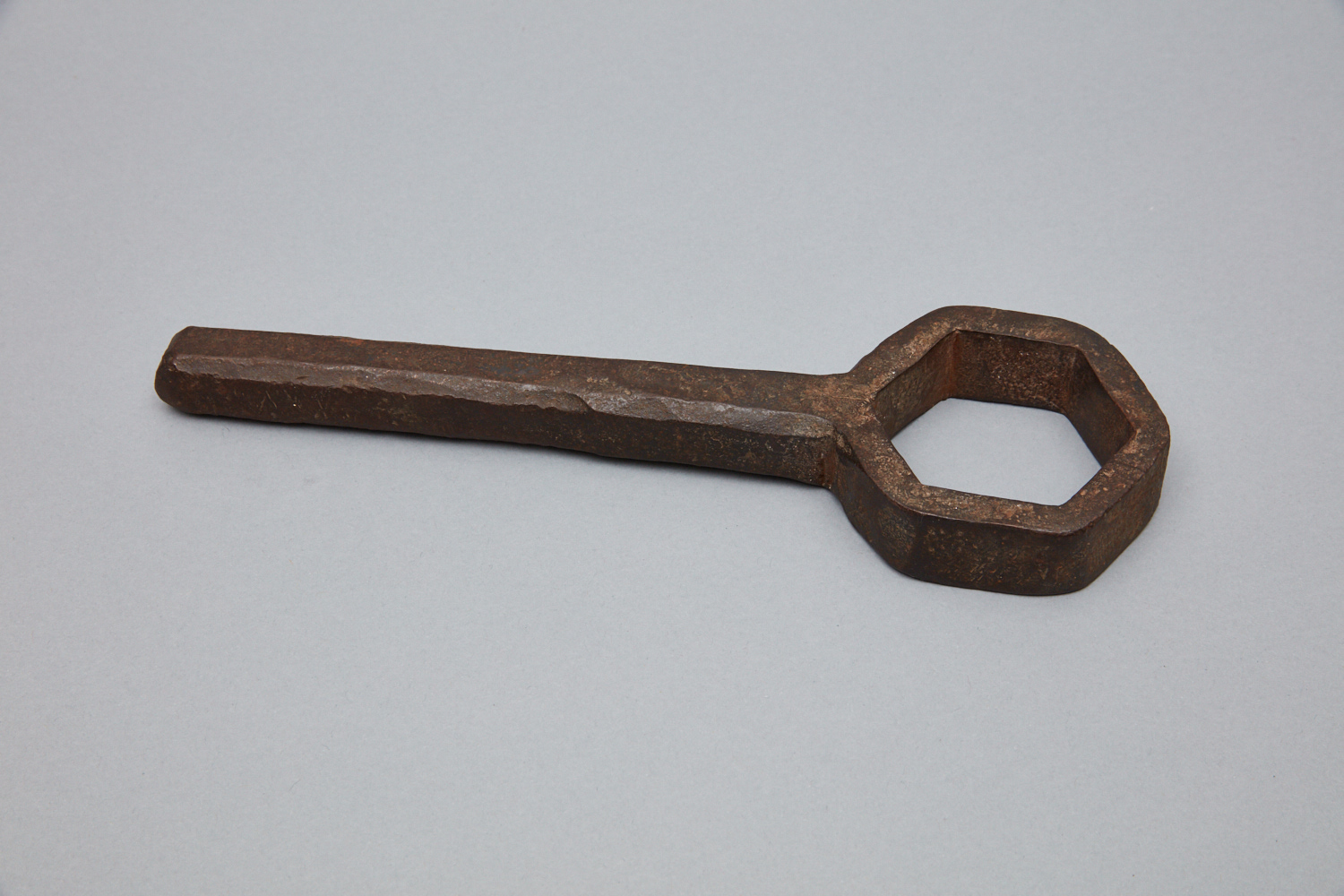
Steel brace with maple handle. Church Family, Mount Lebanon, NY. Shaker Museum 1950.3118.1.
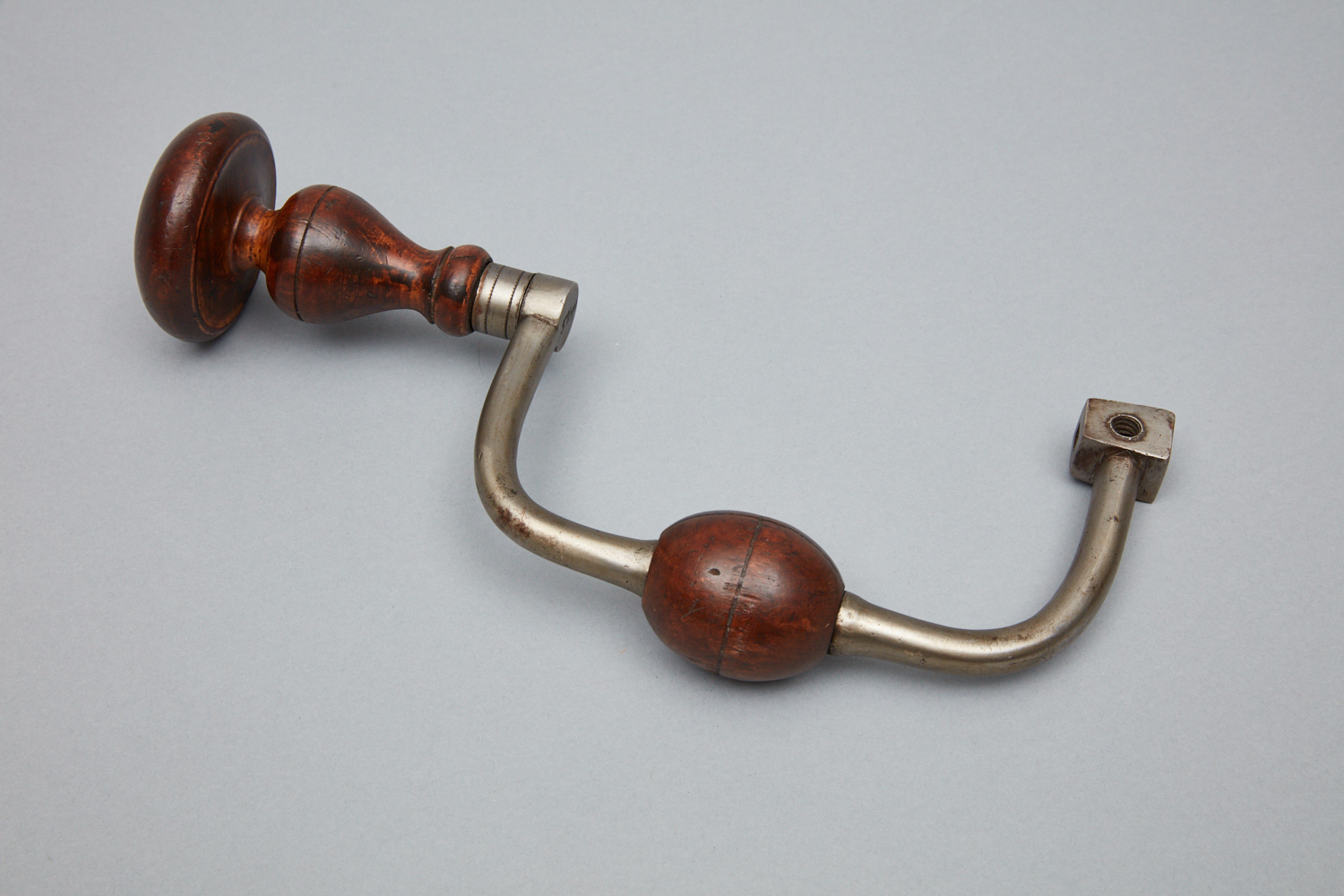
Spading fork stamped with the name of Elder Frederick W. Evans. North Family, Mount Lebanon, NY. Shaker Museum 1950.3201.1.
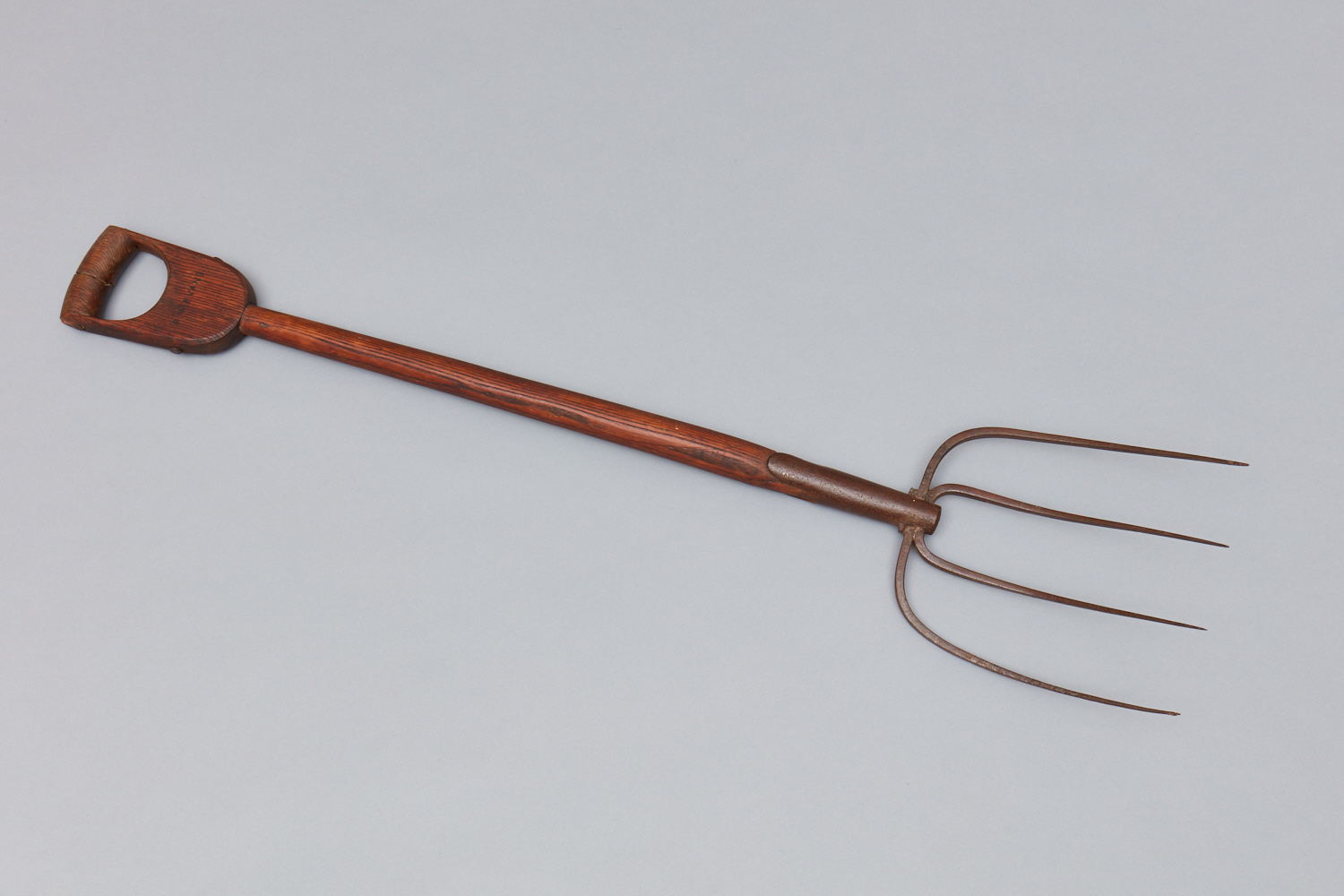
Shaving fork used to break up and move wood chips left by woodworking machines. Canterbury, NH. Shaker Museum 1950.3485.1.
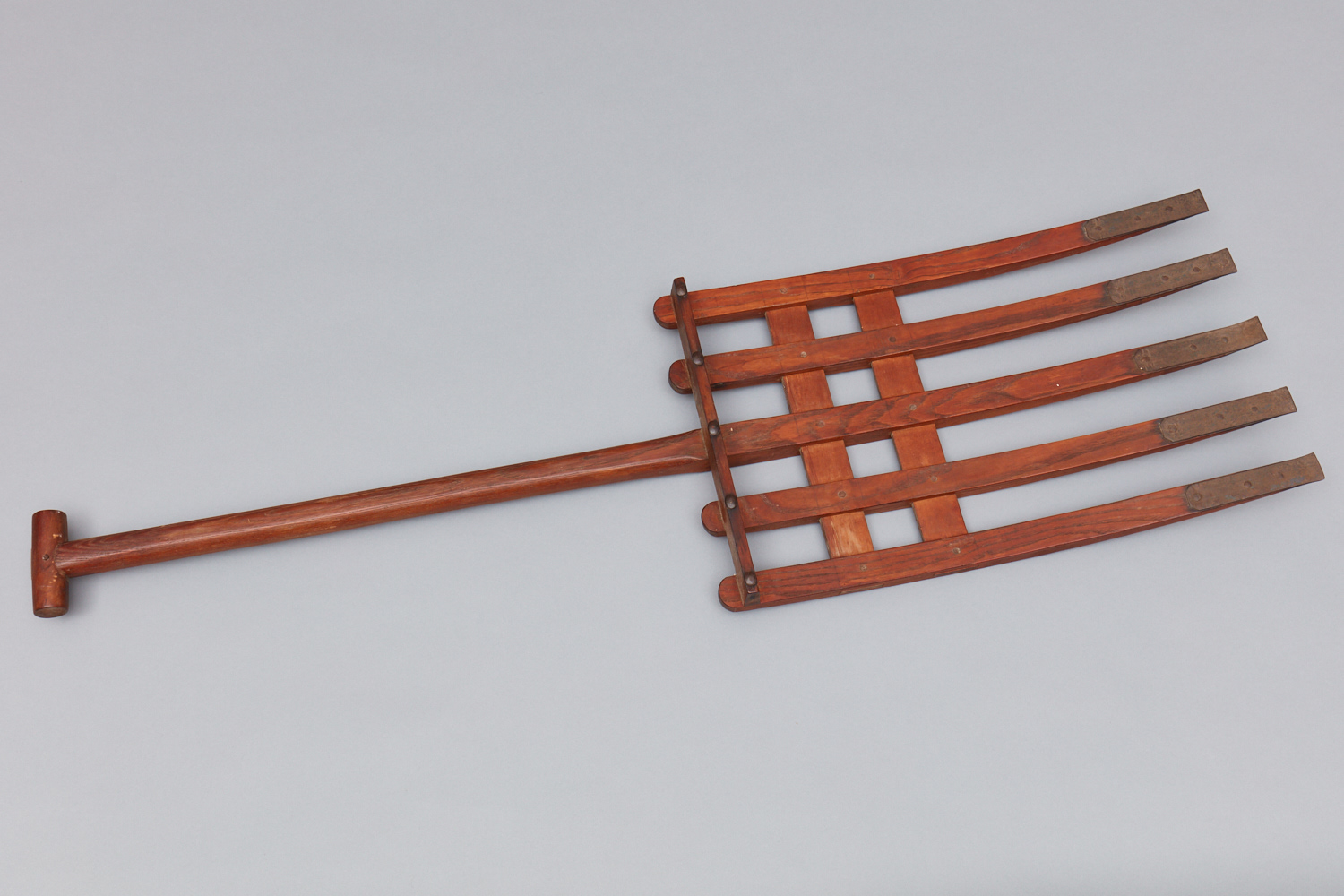
Metal screw hammer wrench. Mount Lebanon, NY. Shaker Museum 1950.3533.1.
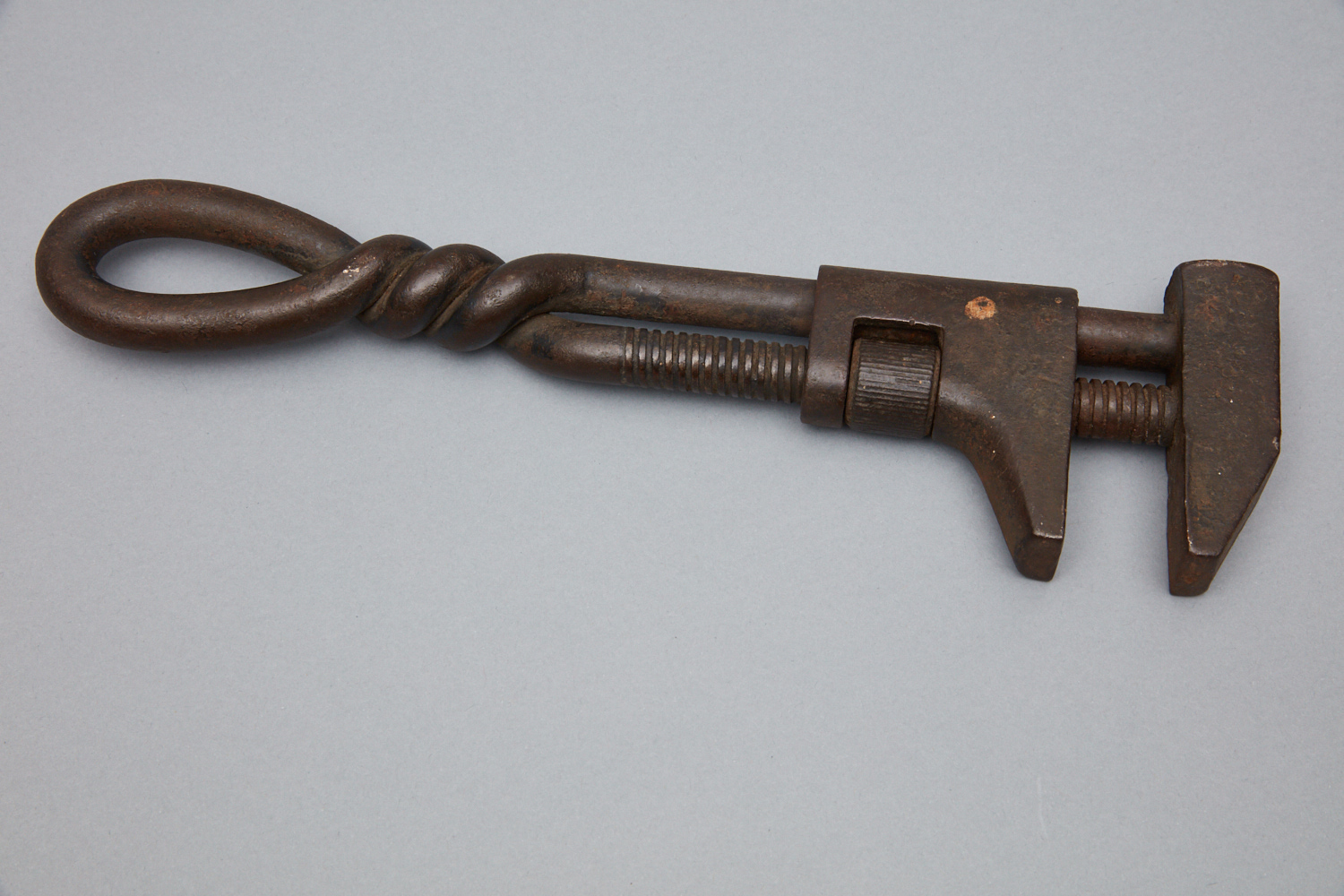
Iron dibble with hickory handle, used to make planting holes in soil. North Family, Mount Lebanon, NY. Shaker Museum 1950.3573.1.
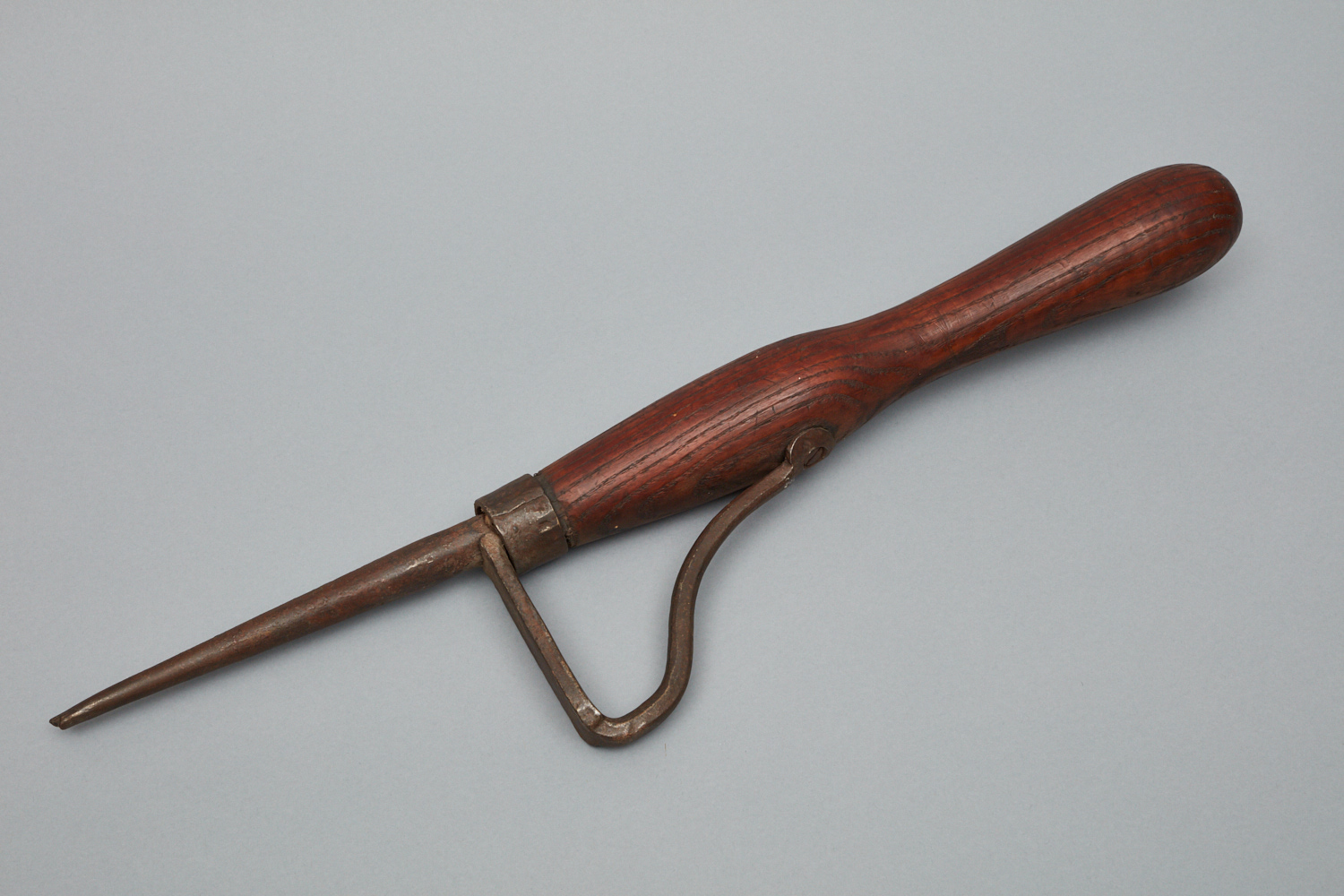
Spirit level, manufactured in 1847. Hancock, MA. Shaker Museum 1950.3575.1.
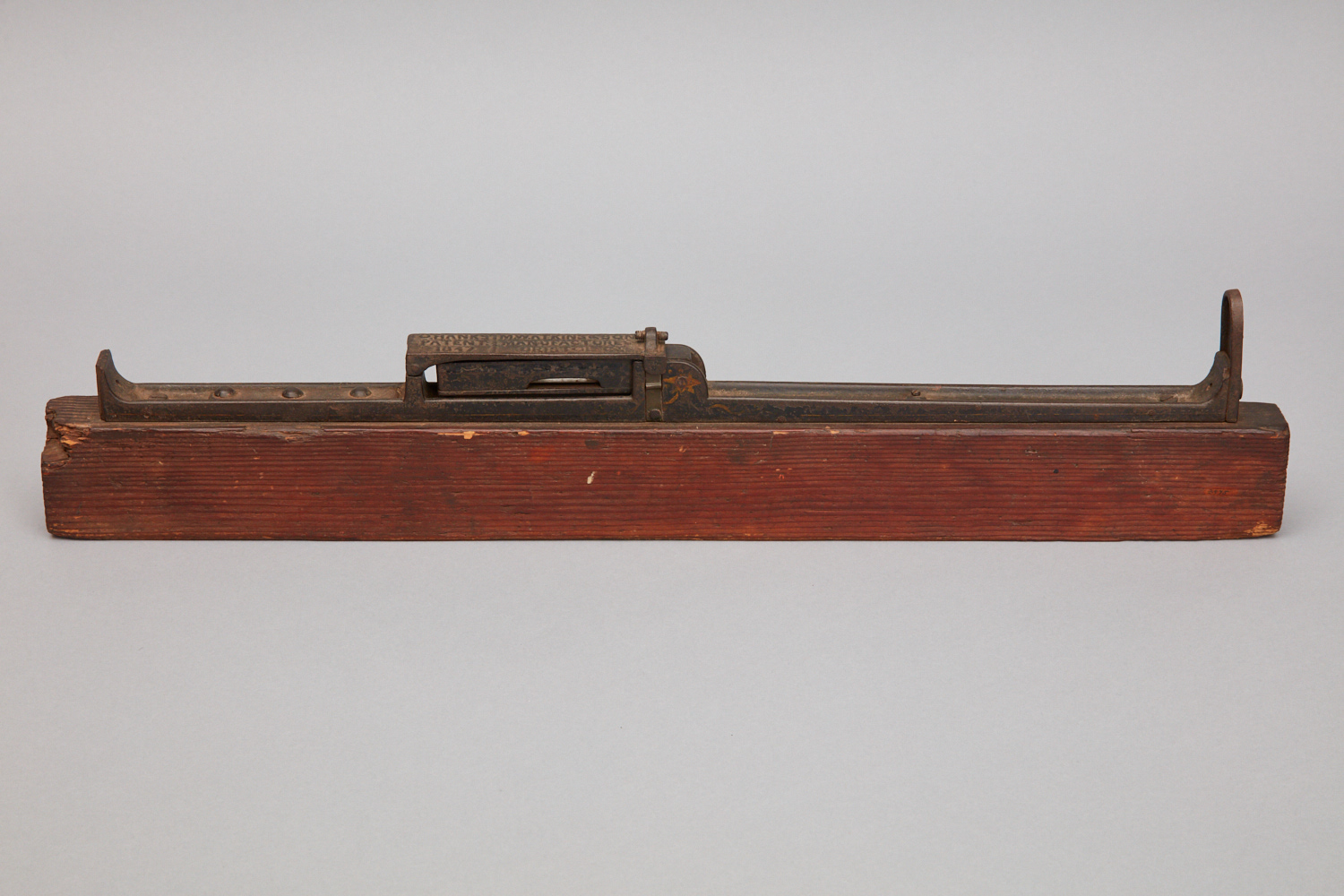
Two-tine hay fork inscribed "V / S". Mount Lebanon, NY. Shaker Museum 1950.3844.1.
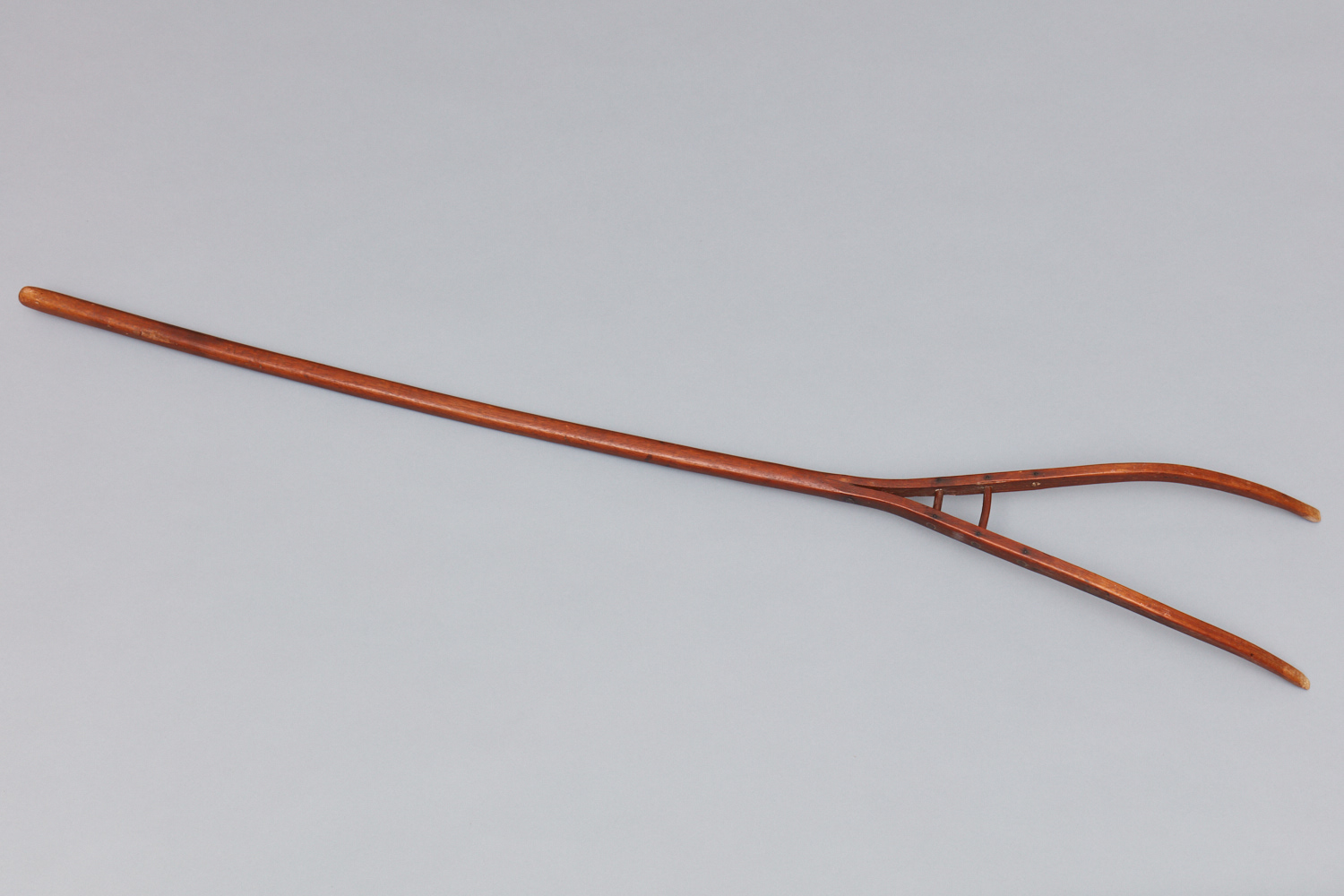
Fruit corer and parer, manufactured ca. 1877. North Family, Mount Lebanon, NY. Shaker Museum 1950.4210.1.
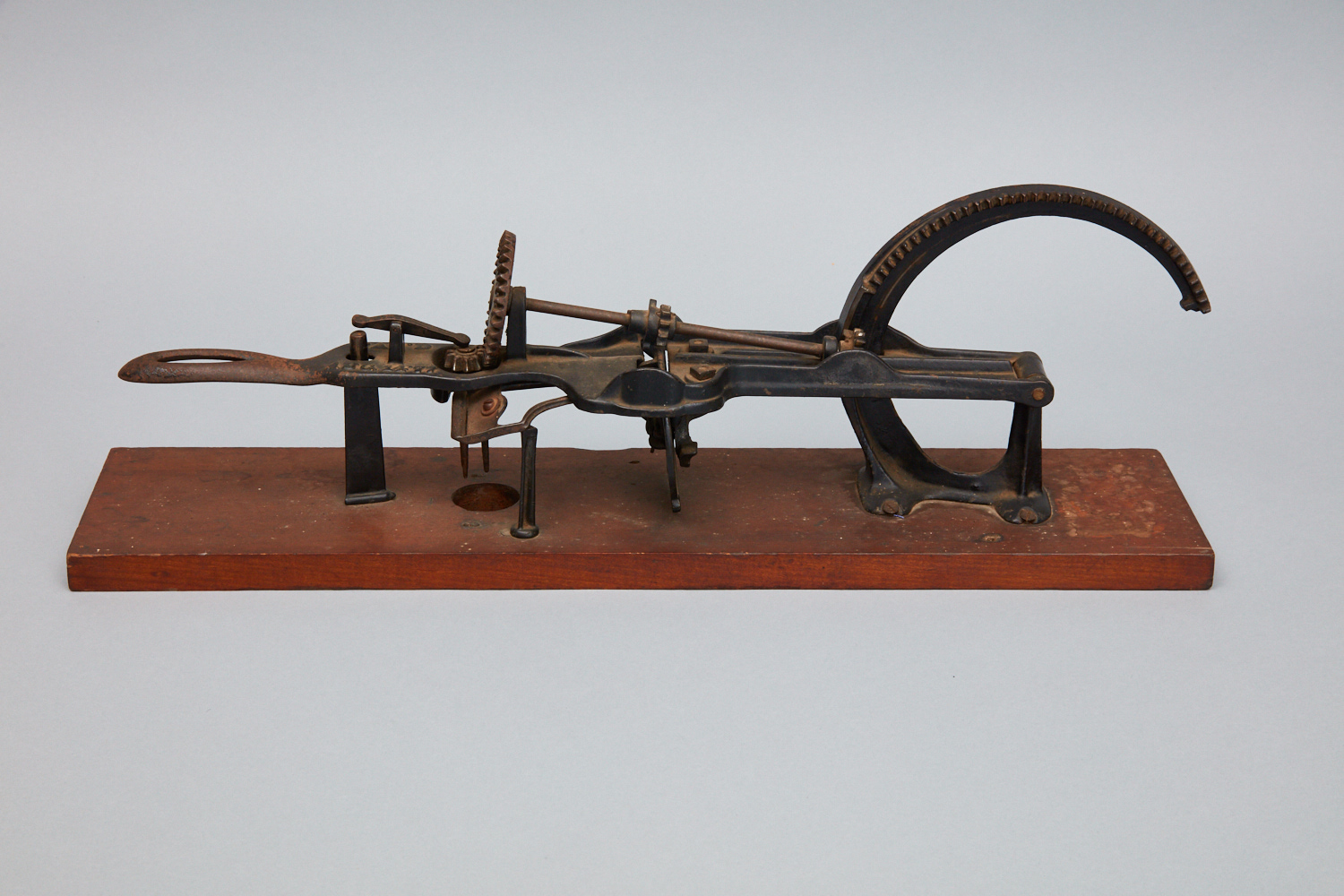
Shovel used to turn and stir drying apples. Canterbury, NH. Shaker Museum 1952.4607.1.
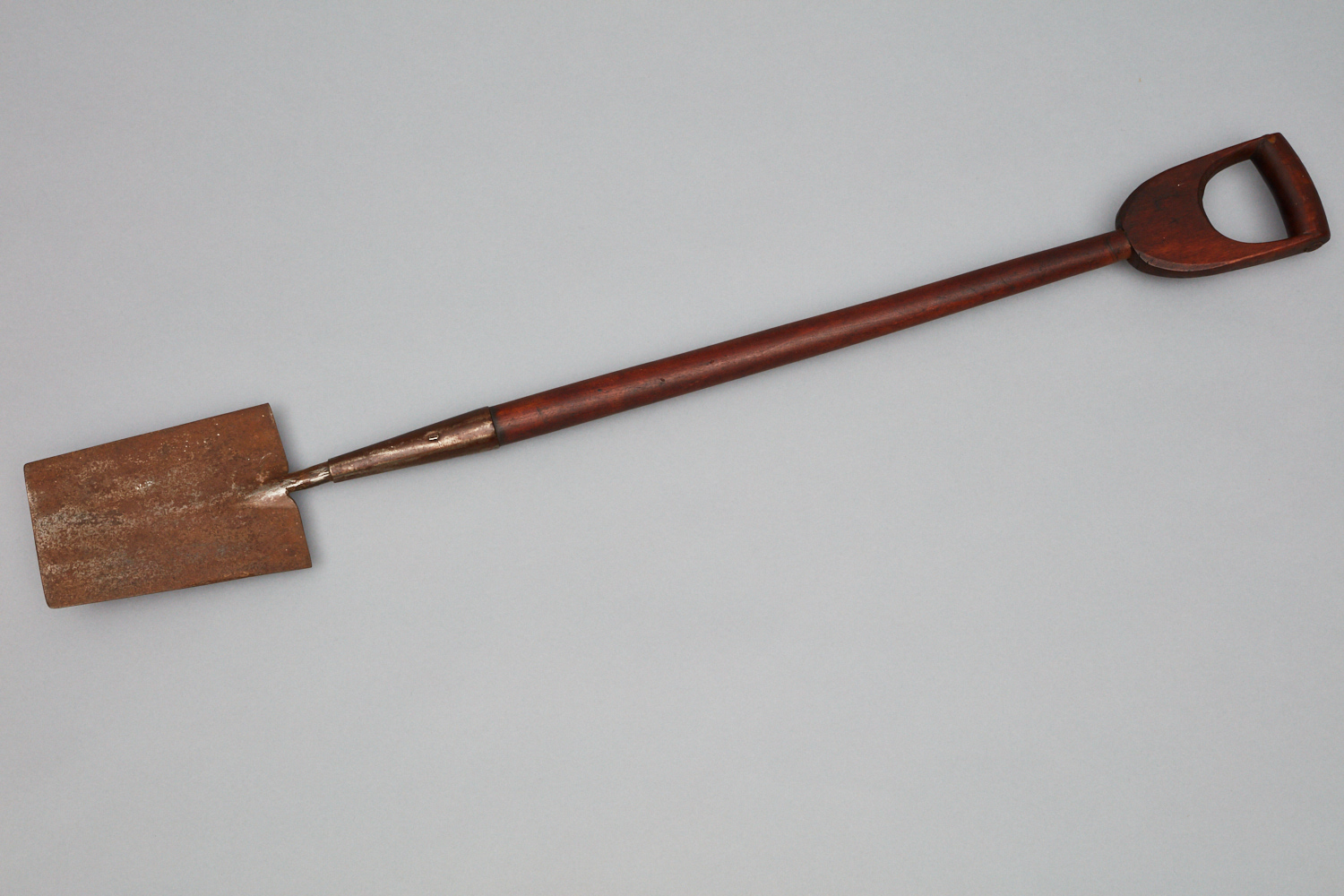
Kent style claw hammer. Canterbury, NH. Shaker Museum 1952.5066.1.
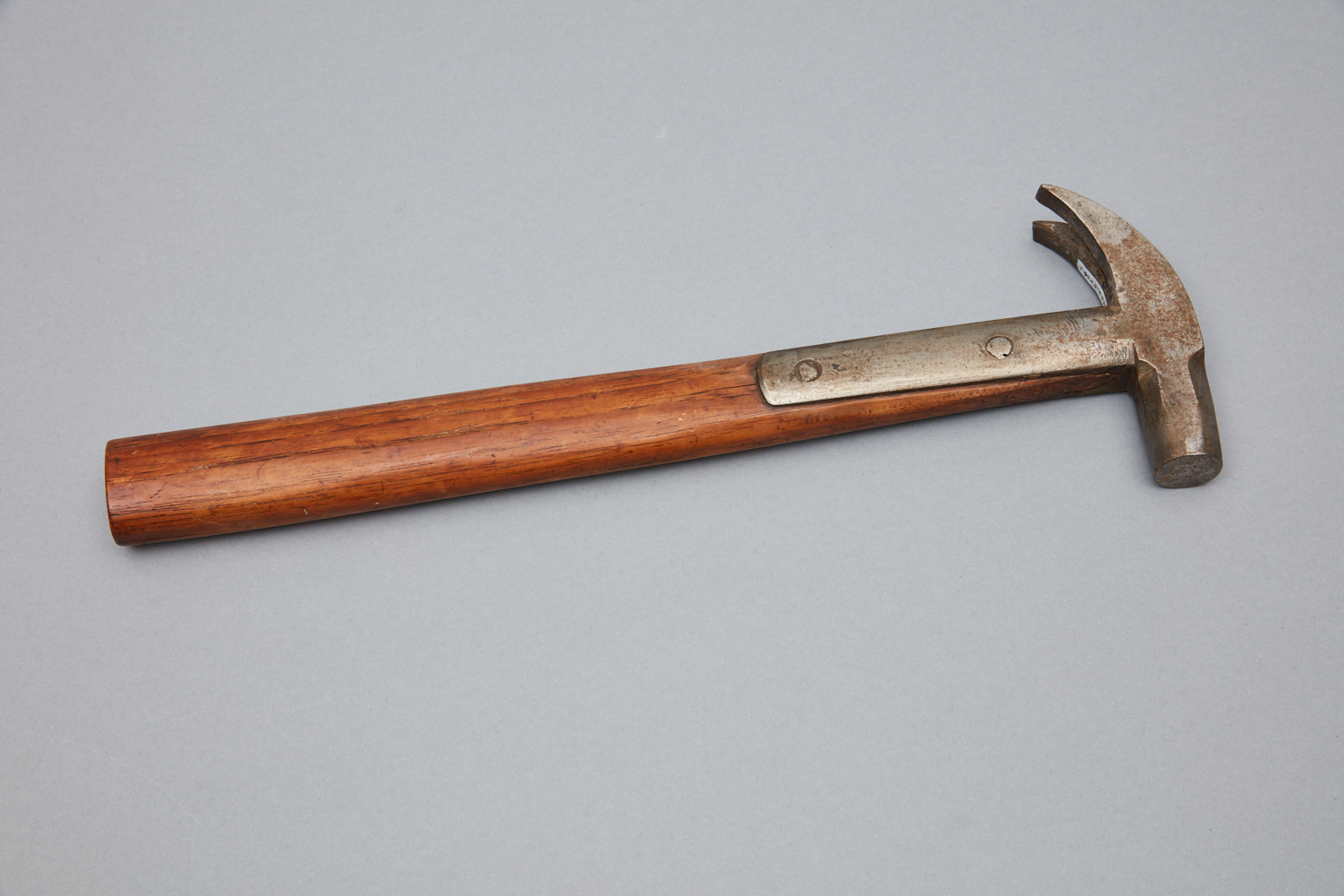
Try square. Church Family, Mount Lebanon, NY. Shaker Museum 1952.5471.1.
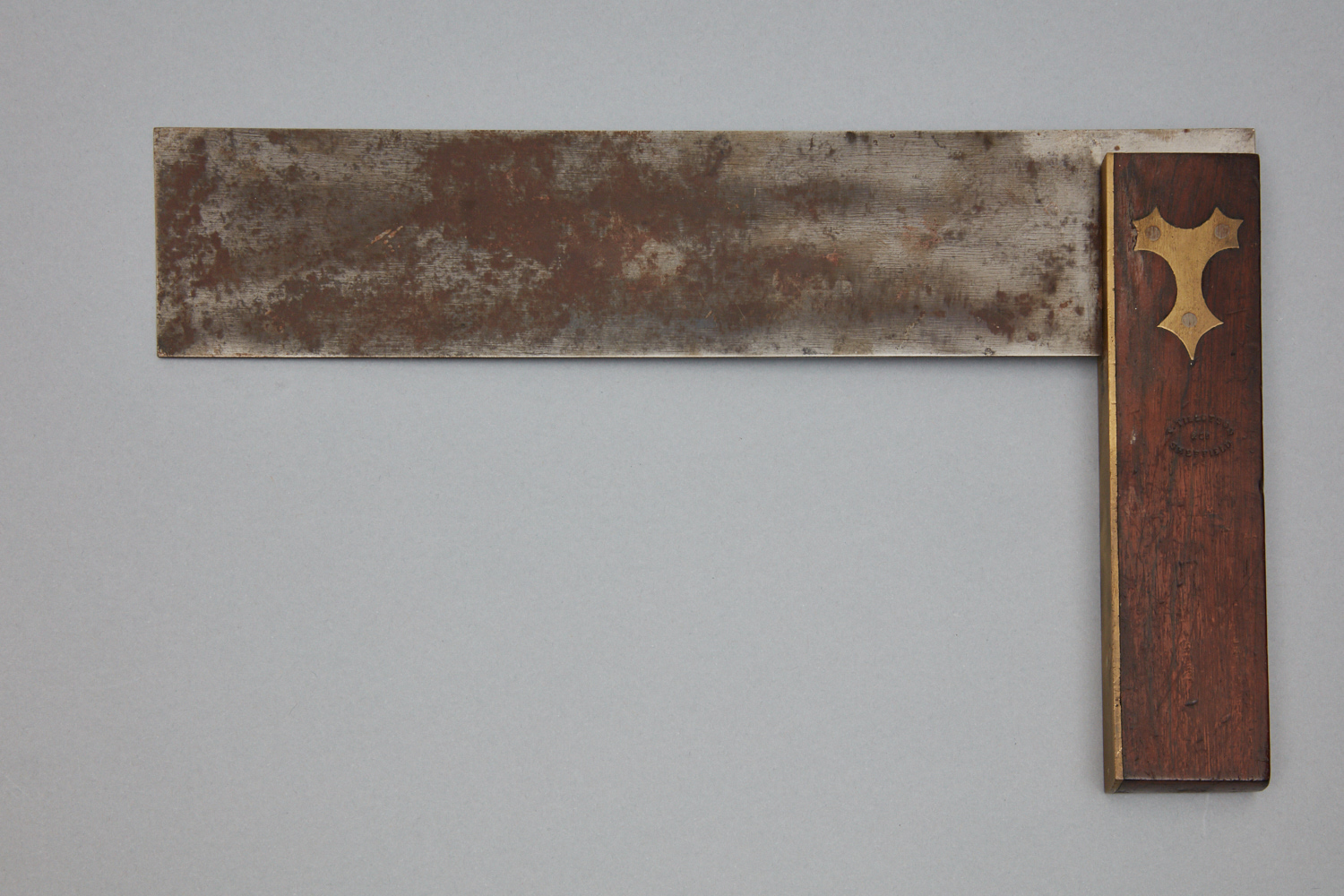
Clamp or hand screw stamped 1855. Church Family, Mount Lebanon, NY. Shaker Museum 1952.5528.1.
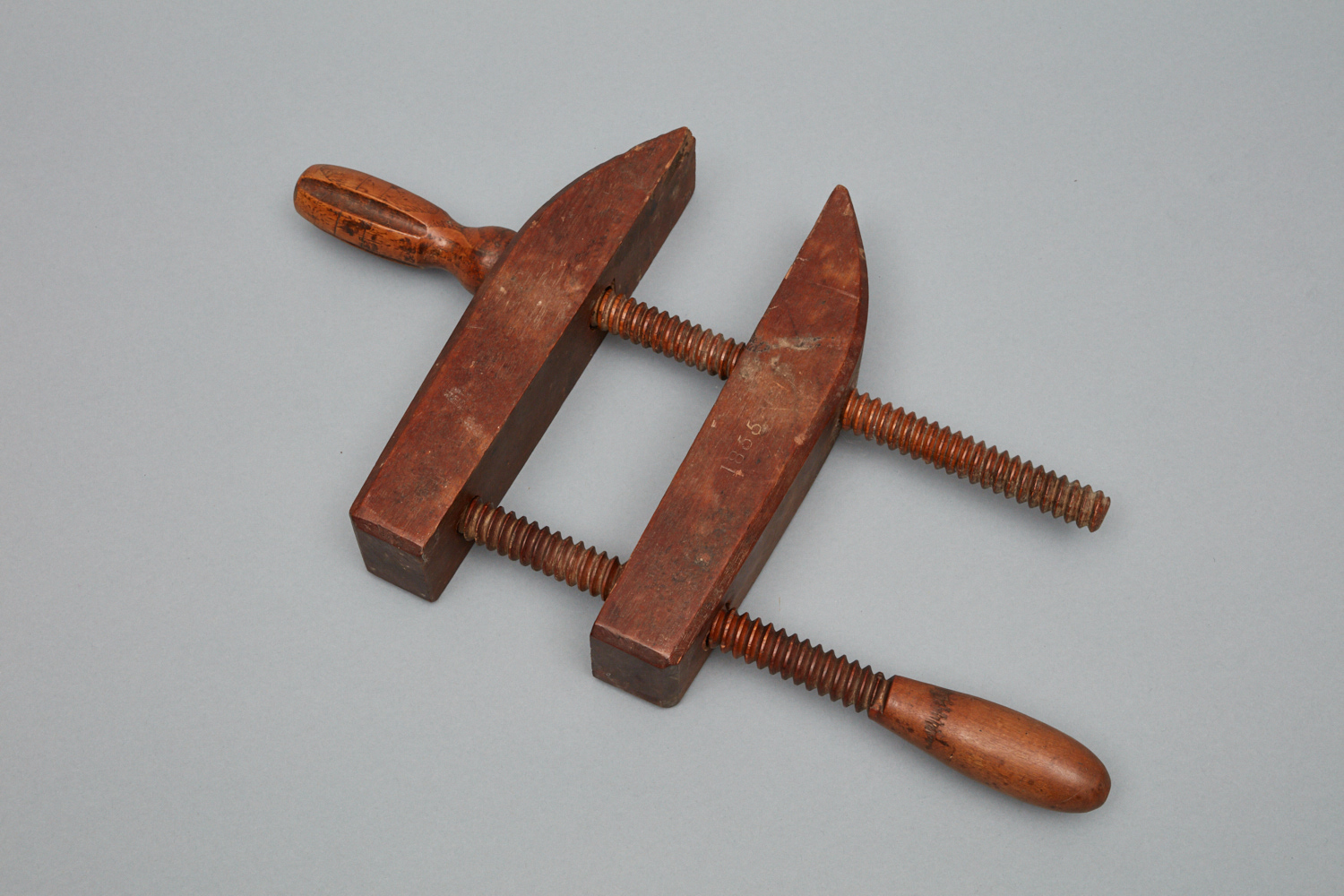
Forged iron divider. Mount Lebanon, NY. Shaker Museum 1955.7227.1.
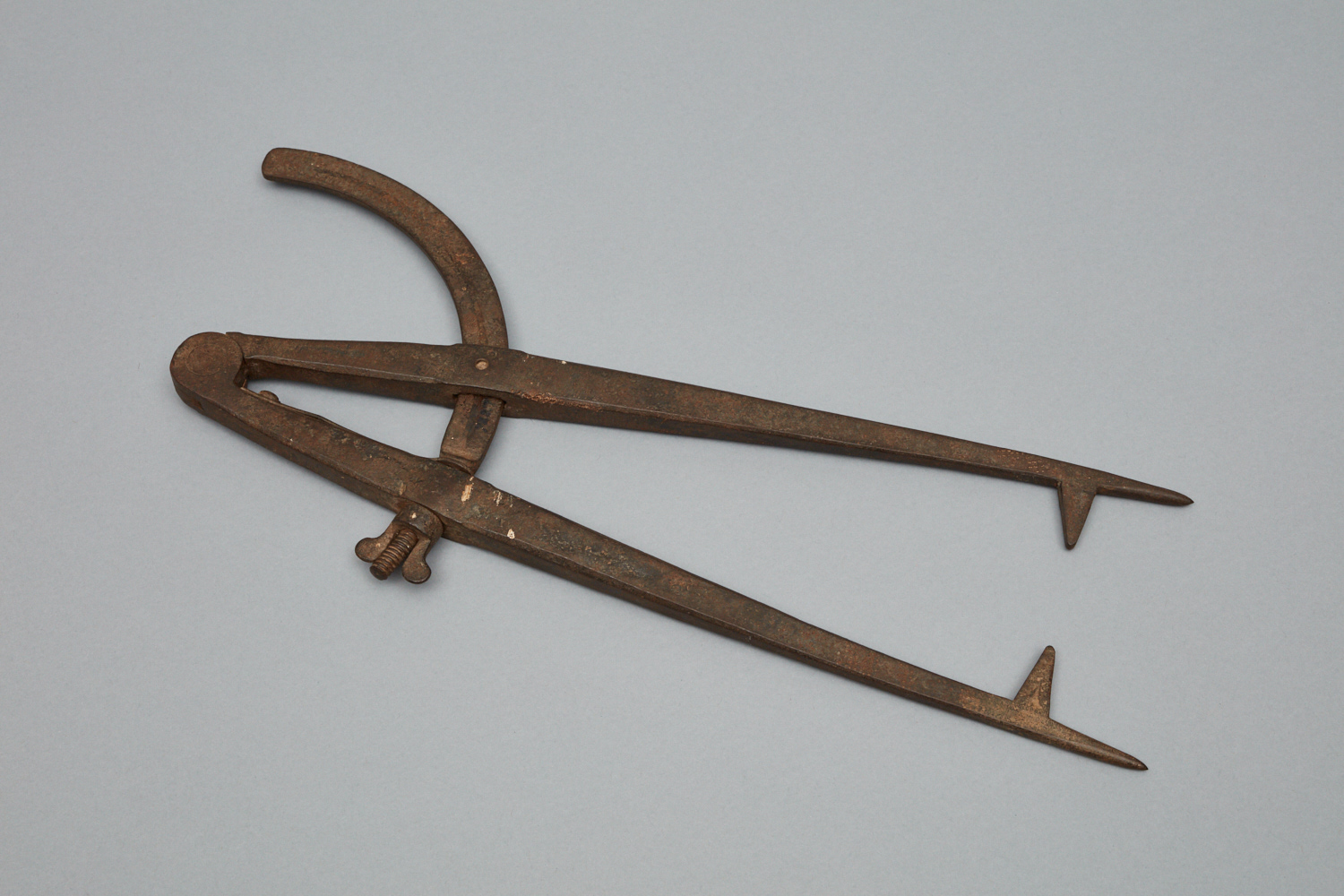
Steel broadax, used for squaring up timbers. Mount Lebanon, NY. Shaker Museum 1956.8176.1.
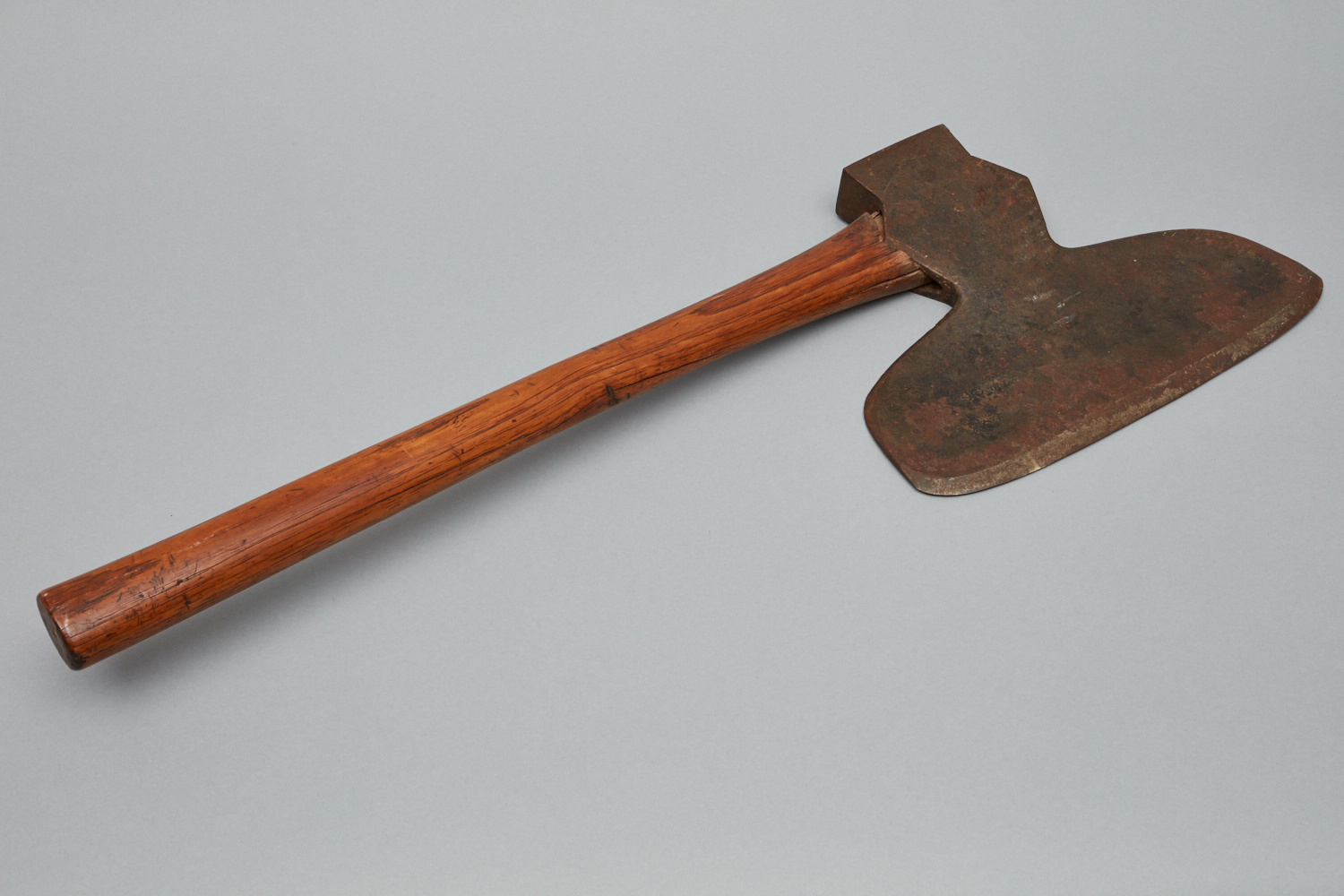
Shaker-built hand plane. Sabbathday Lake, ME. Shaker Museum 1957.9199.1.
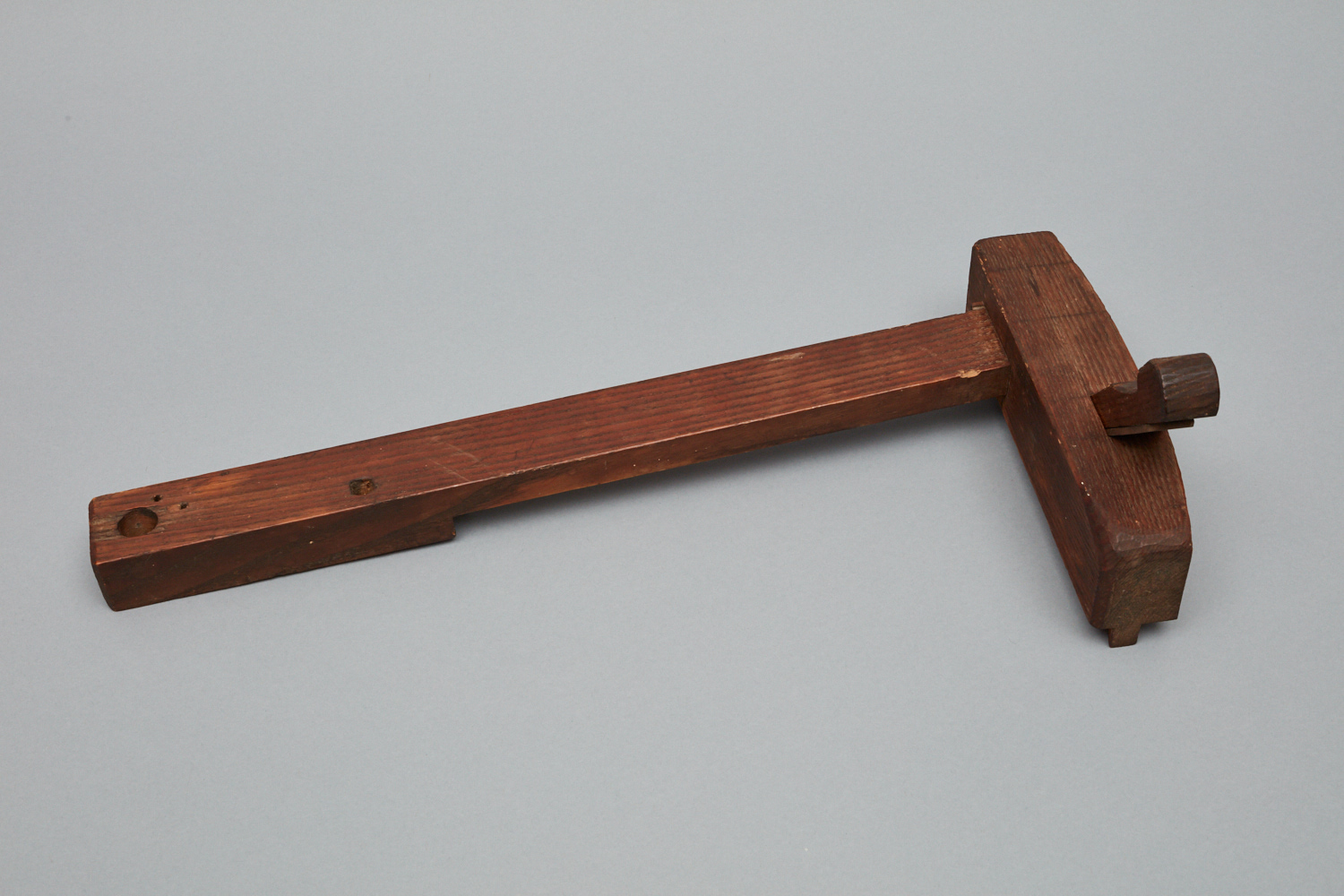
Billhook with hickory handle. Hancock, MA. Shaker Museum 1959.11346.1.
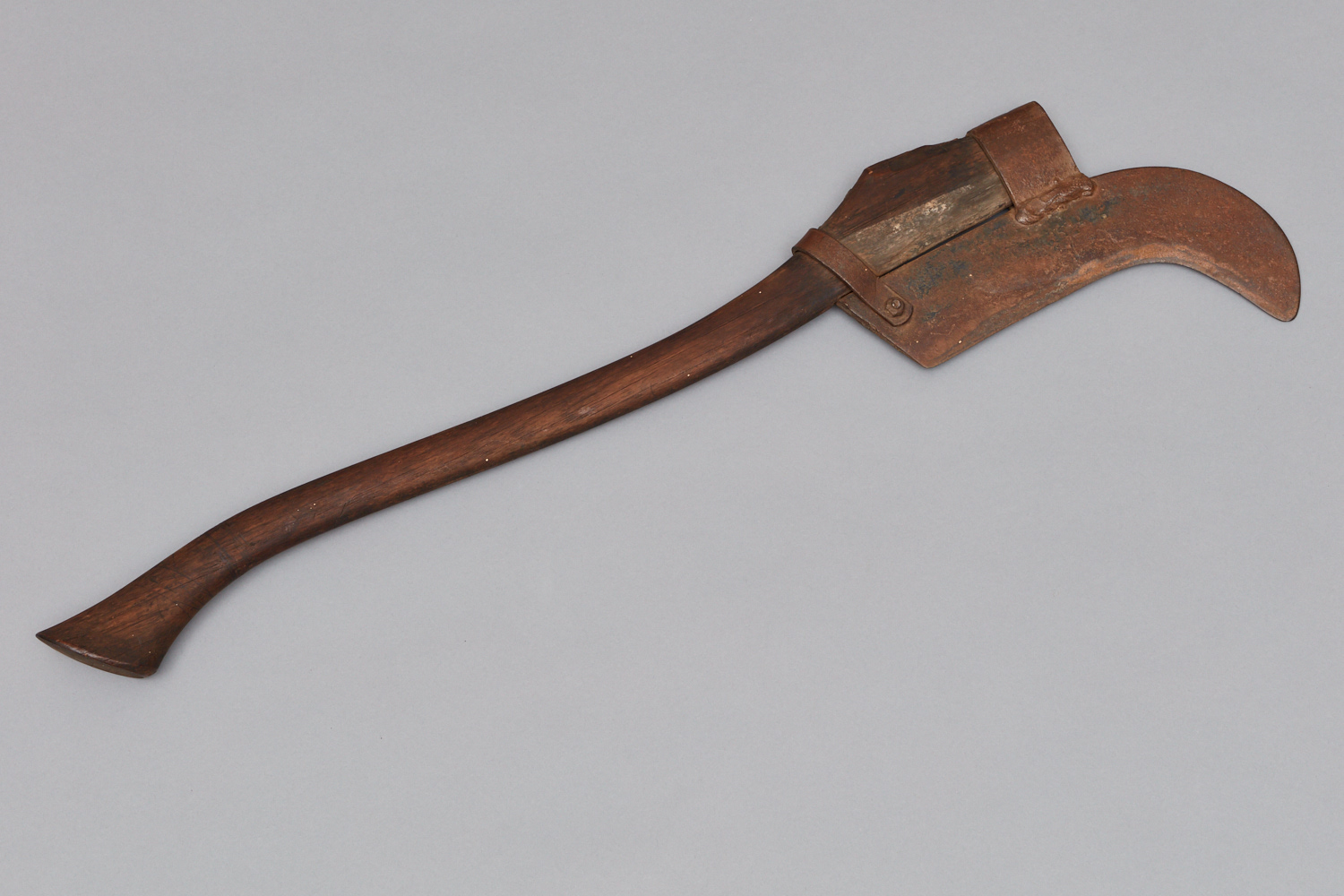
Shaker-made raising plane stamped "EK" and "ID". Canterbury, NH. Shaker Museum 1968.16523.1.
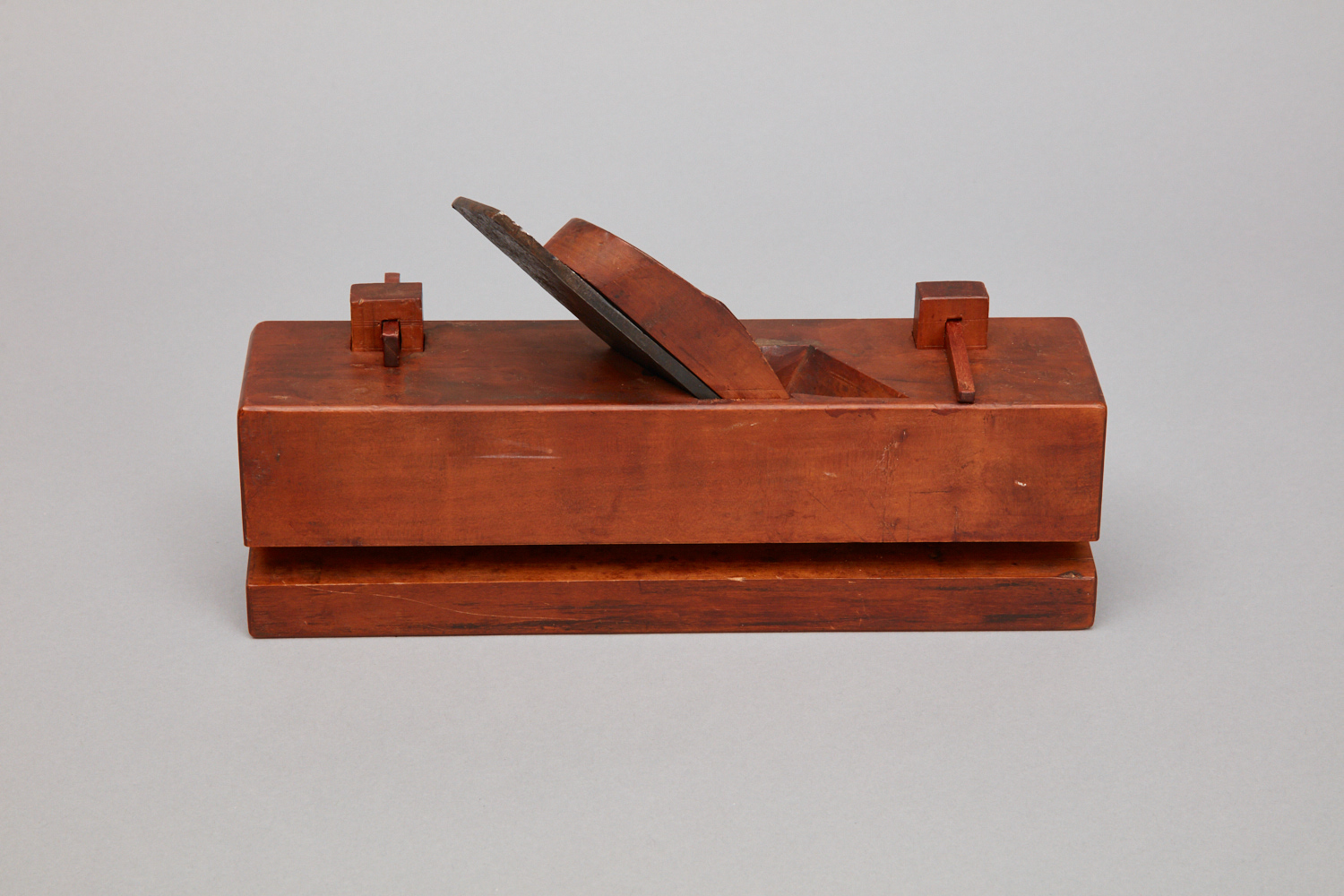
Plane stamped "AB", possibly for Brother Amos Bishop. Church Family, Mount Lebanon, NY. Shaker Museum 1990.1.15.
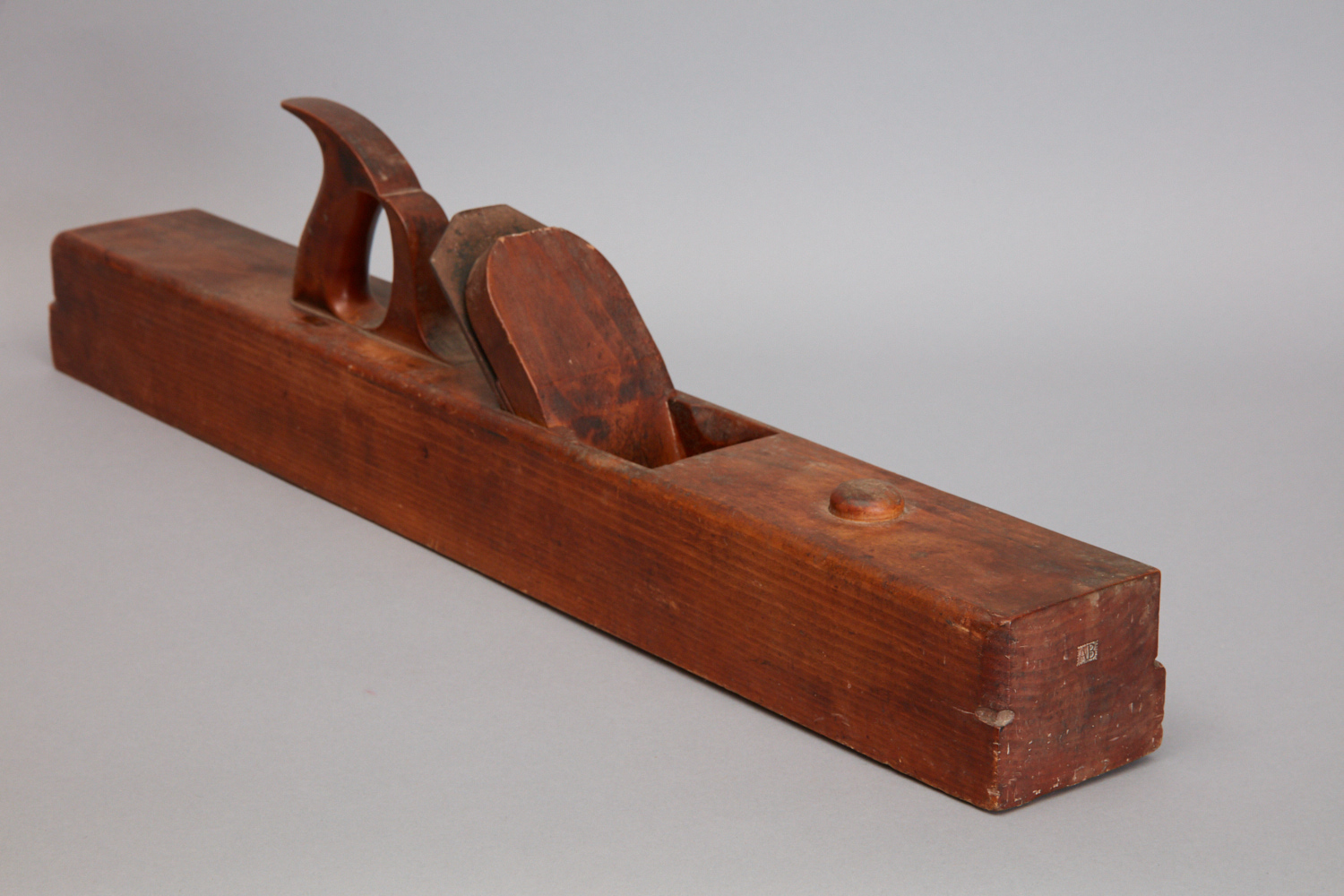
Plane used by Brother Henry DeWitt. Church Family, Mount Lebanon, NY. Shaker Museum 1990.1.16.
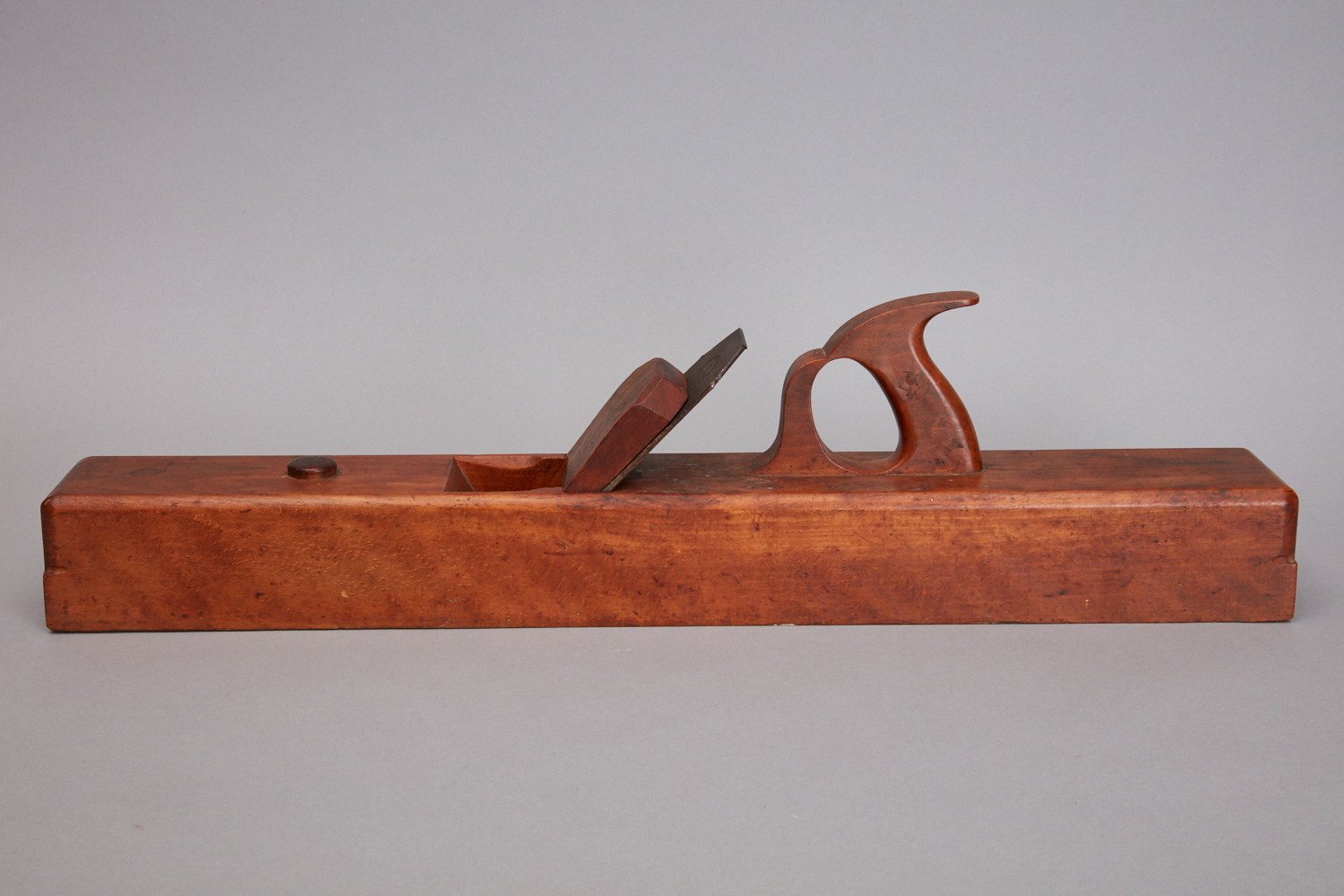
Jointer plane stamped "JS", probably for Brother John Shapley. Second Family, Mount Lebanon, NY. Shaker Museum 1990.1.17.
